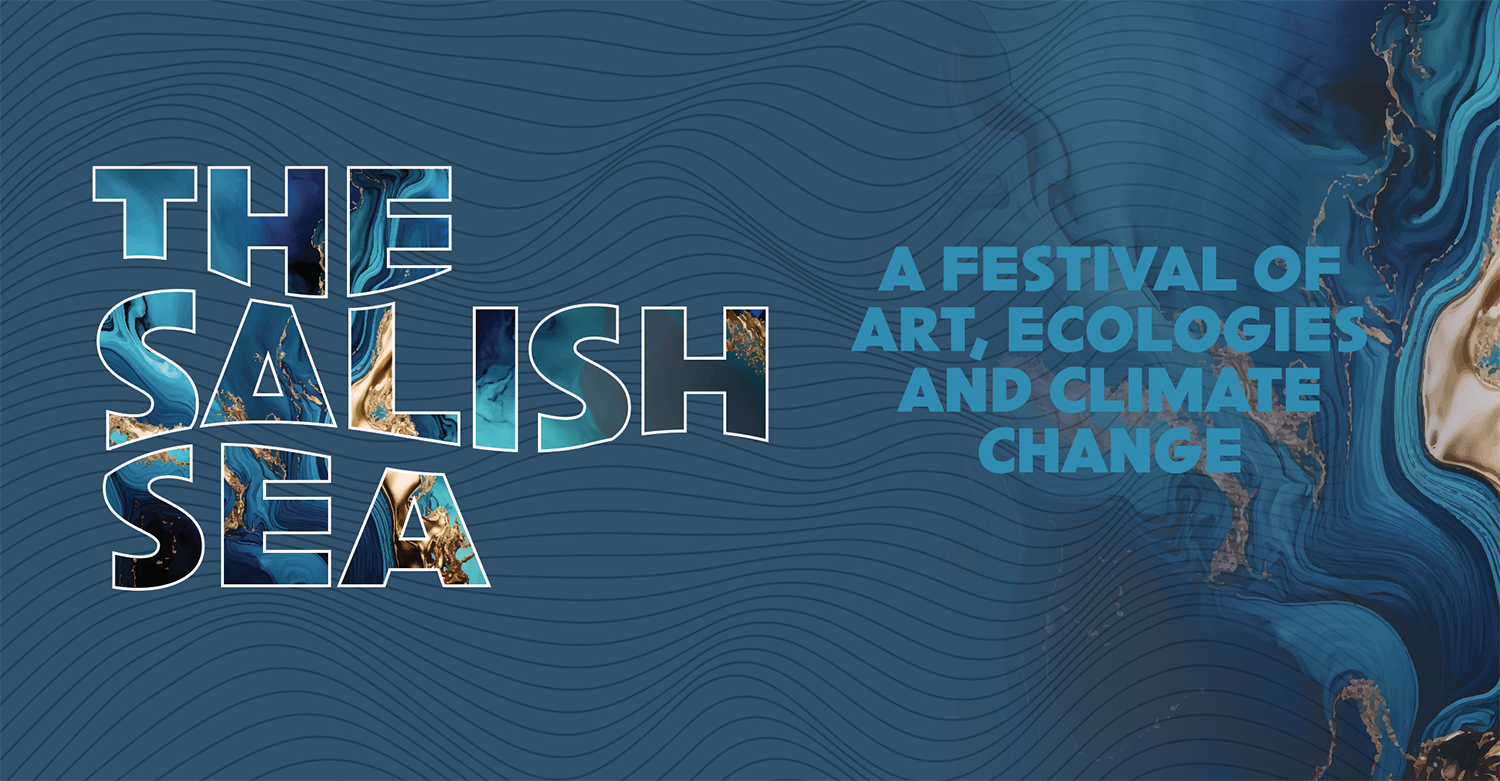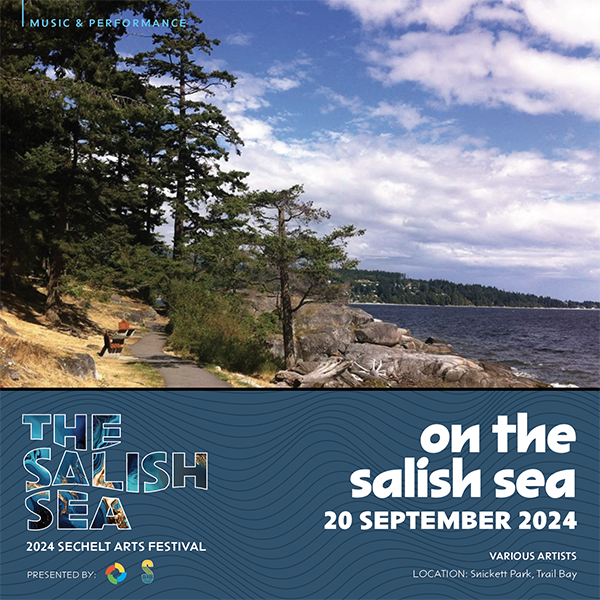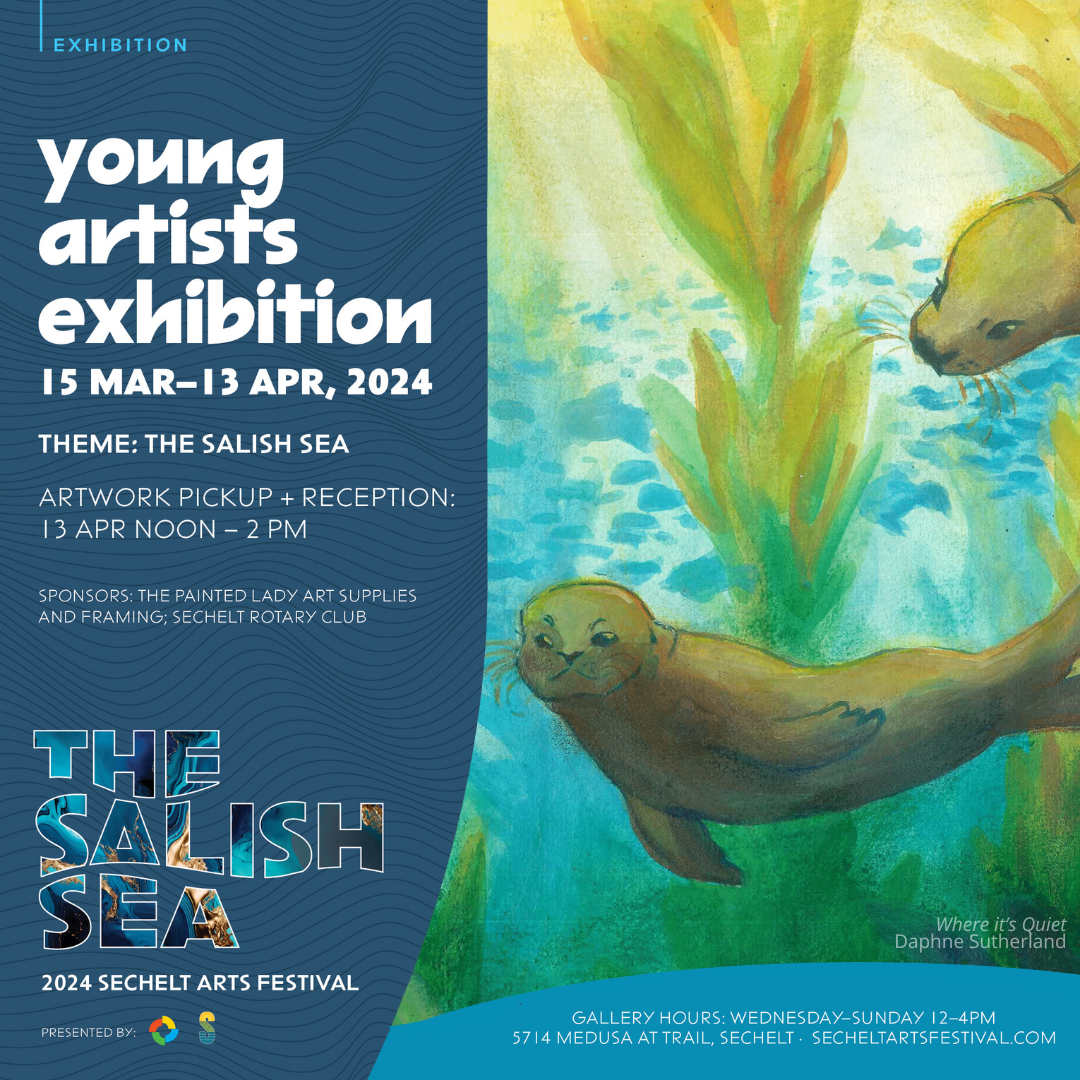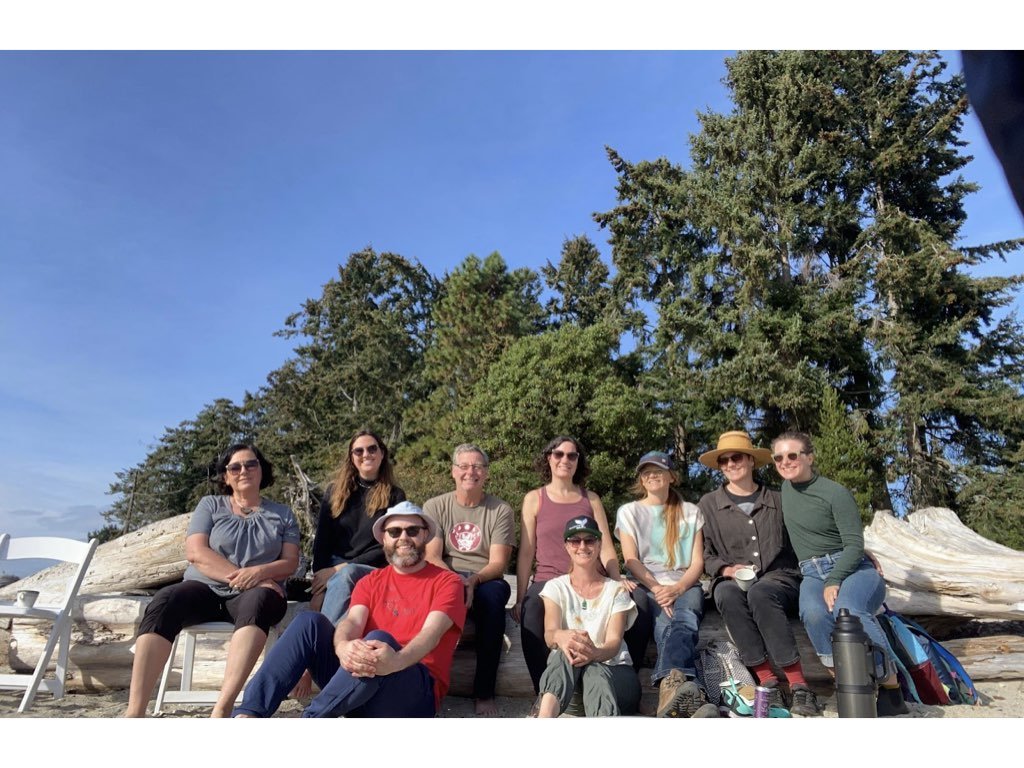2024 SECHELT ARTS FESTIVAL
Beginning in 2024, under the guidance of the Sunshine Coast Arts Council, the Sechelt Arts Festival connects art, ecology and climate change. We envision art as a means of calling attention to relationships – to our local ecologies, to our companion communities, and to the land, air and waters that make this part of the world so remarkable and unique. Art has the ability to help us think through difficult ideas through play, joy, community and belonging. It is in dance, theatre and music that we are able to move through and with ideas; it is through the language of visual art that we are able to give form; and it is through words and texts that we shape sometimes incomprehensible ideas. And for many, the climate and our changing natural environment is one of those ideas. The Festival seeks to weave together environmental, cultural and social ideas as a means of inspiring our communities.
THE SALISH SEA
Between September 20 - 30, 2024 we celebrated the Salish Sea – its other-than-human inhabitants, its waterways and estuaries, its stories of travel and exchange, and its vitalness to Sechelt and its communities. Sechelt, as the land between two waters, has been shaped by the Salish Sea – our past, present and future bound to her, despite the increasing challenges of rising waterways and warming oceans.
Hosted at the Chapman Creek/Mission Point Estuary, we presented a series of interconnected events - from a Field School of artists, educators and ecologists learning with the Chapman Creek Estuary, to a series of activities, walks and workshops centering shíshálh ways of knowing the Salish Sea, to a community procession celebrating the equinox, all culminating in a free, out-door festival.
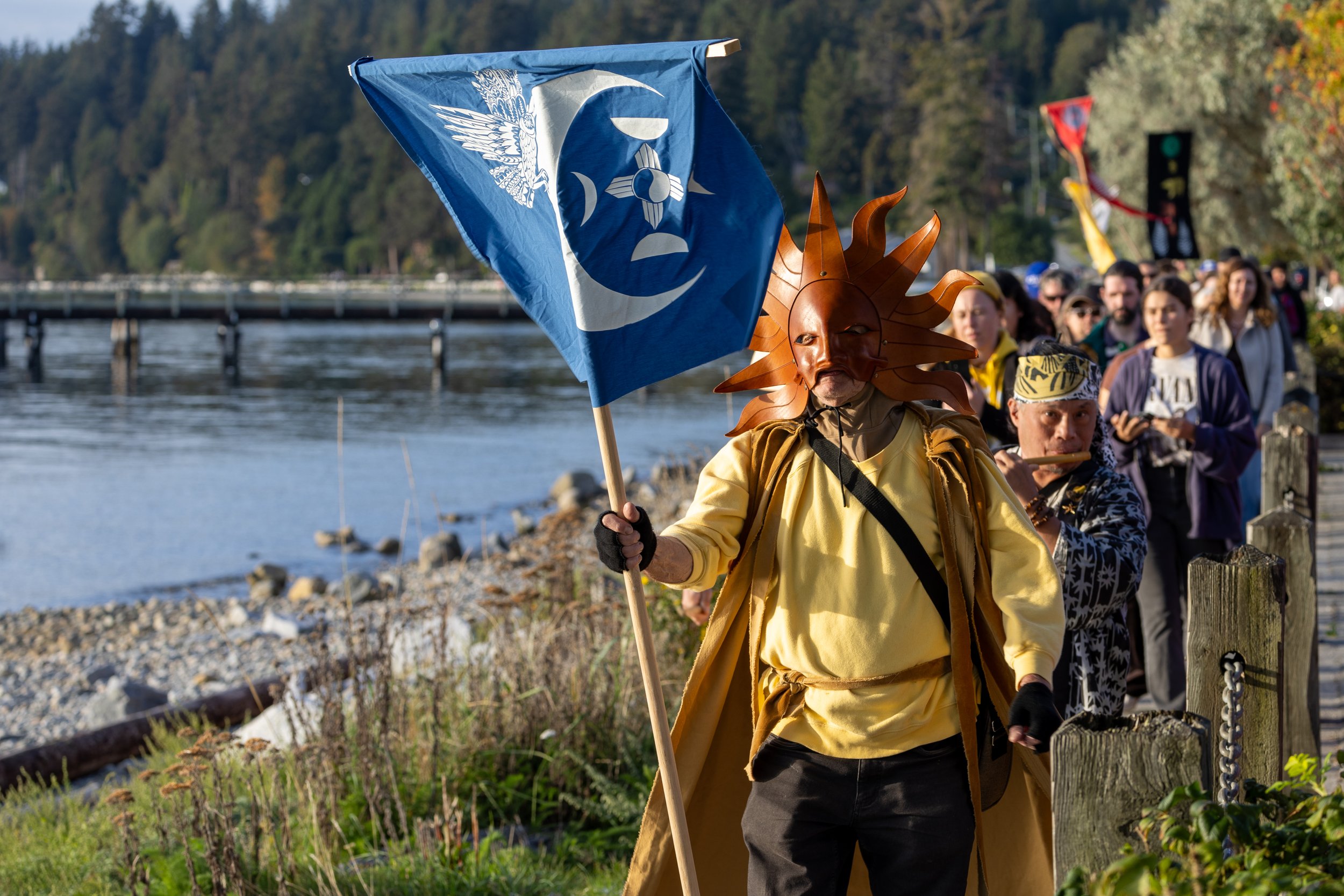
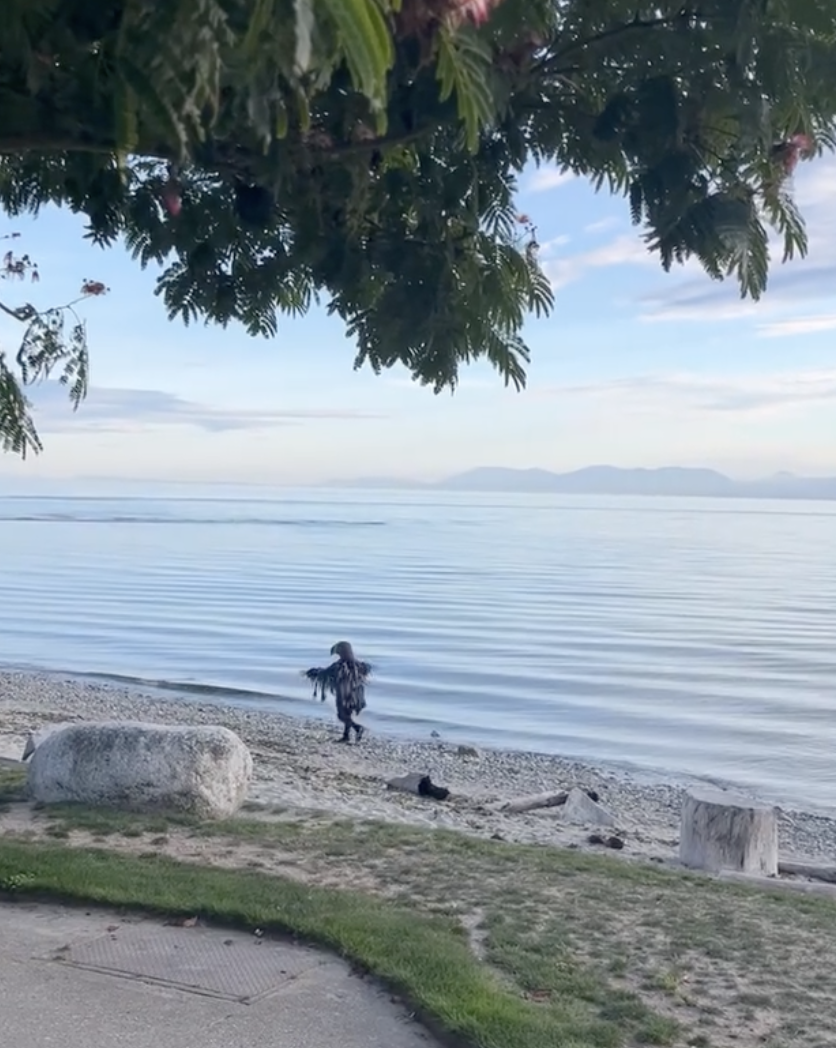
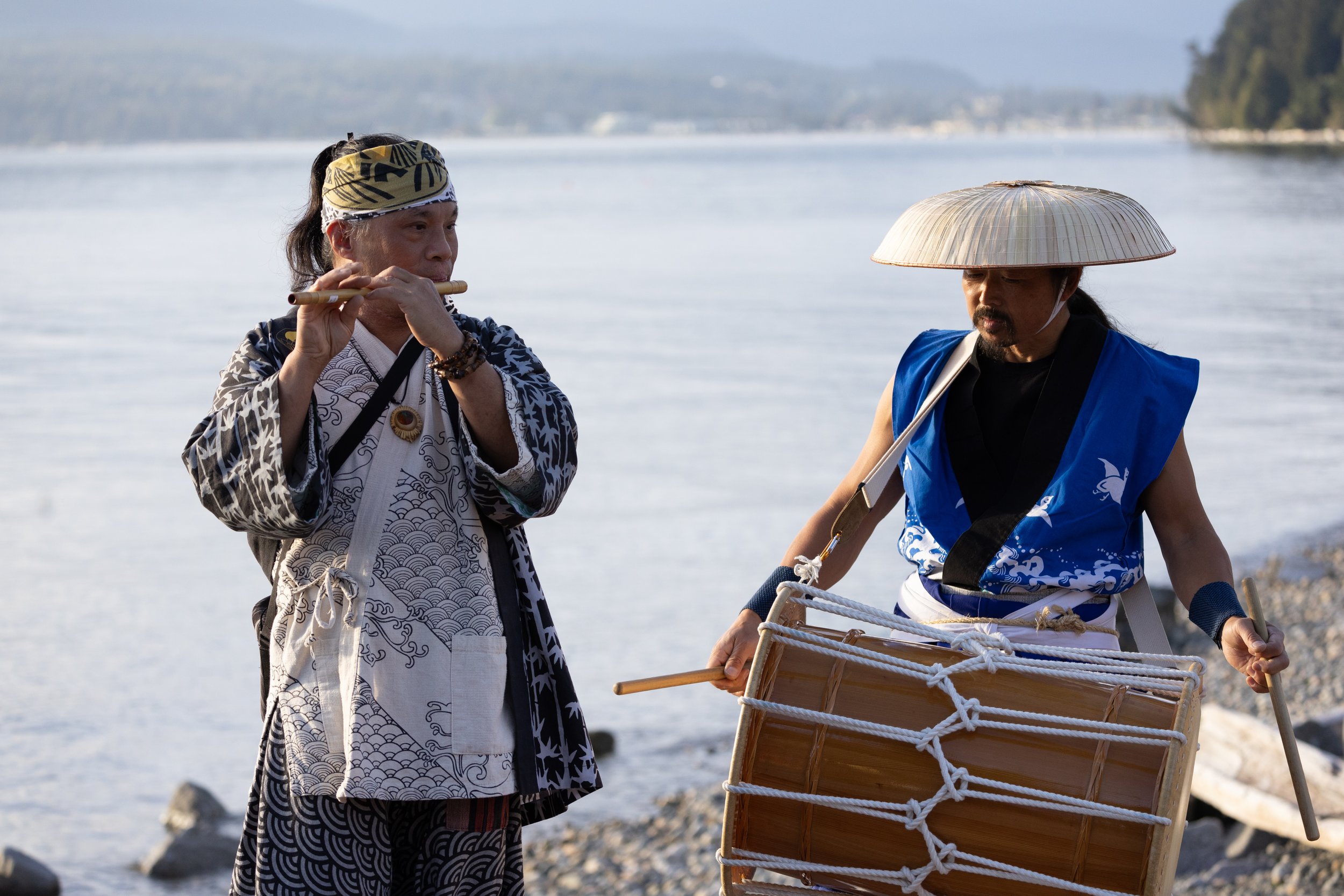
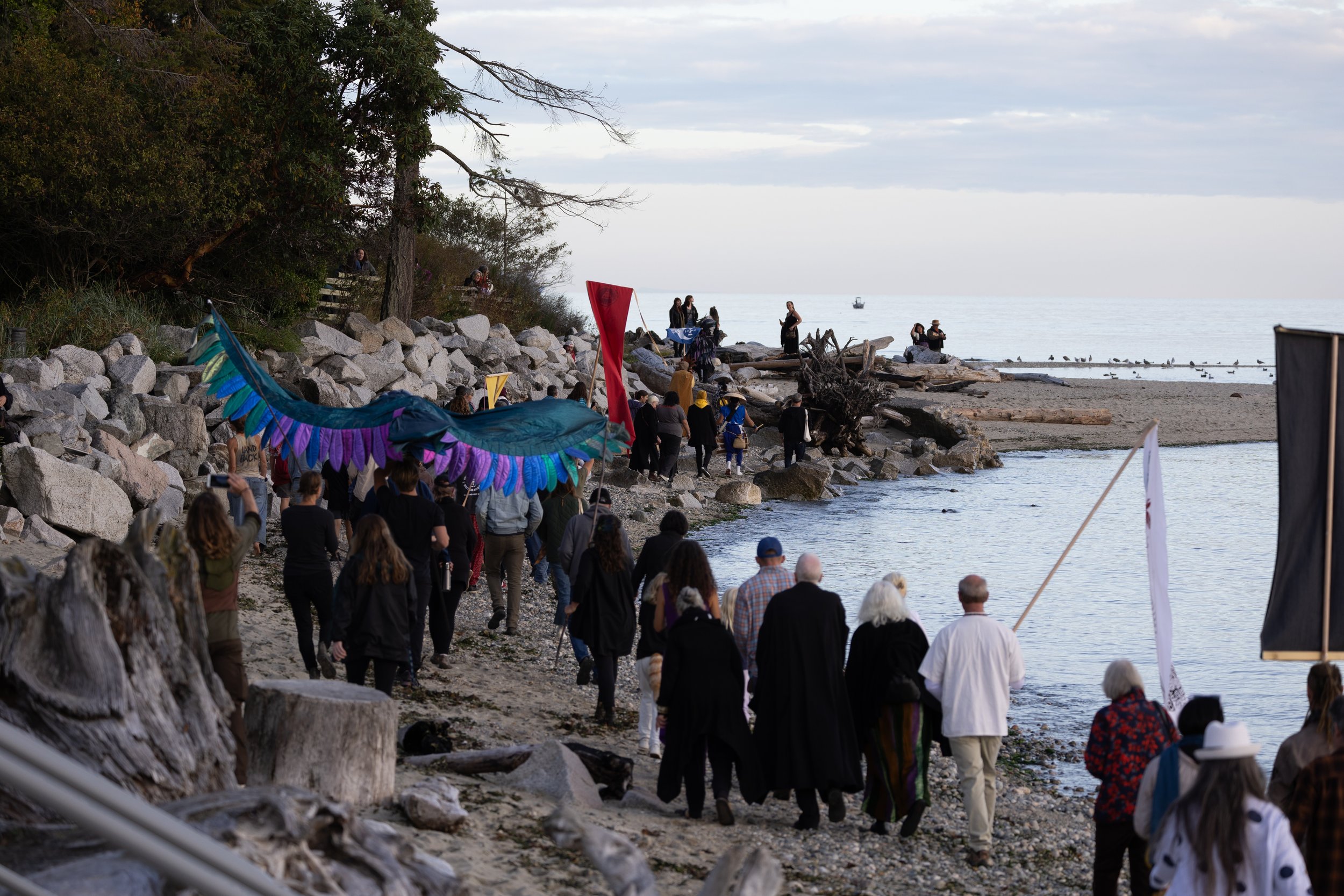
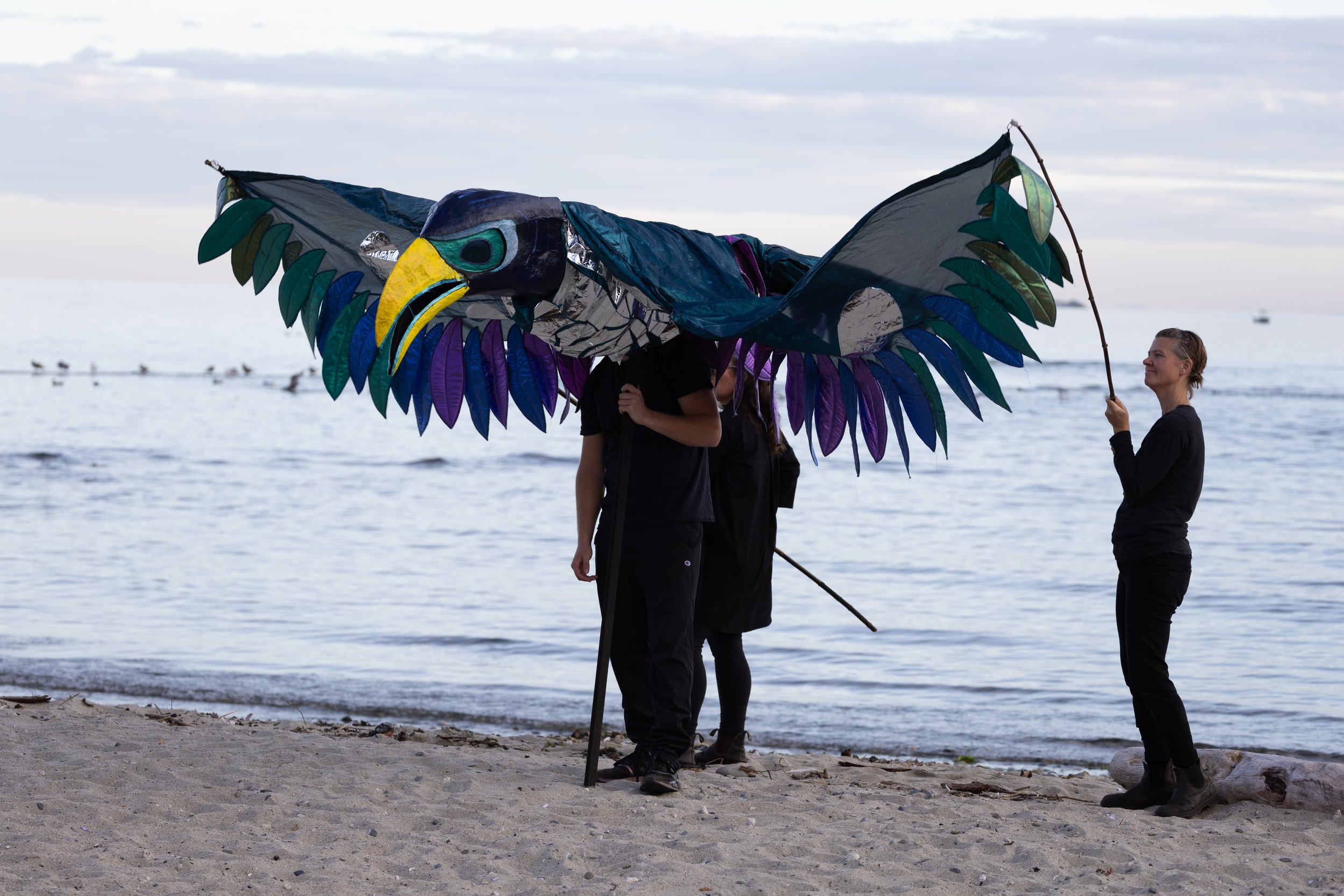
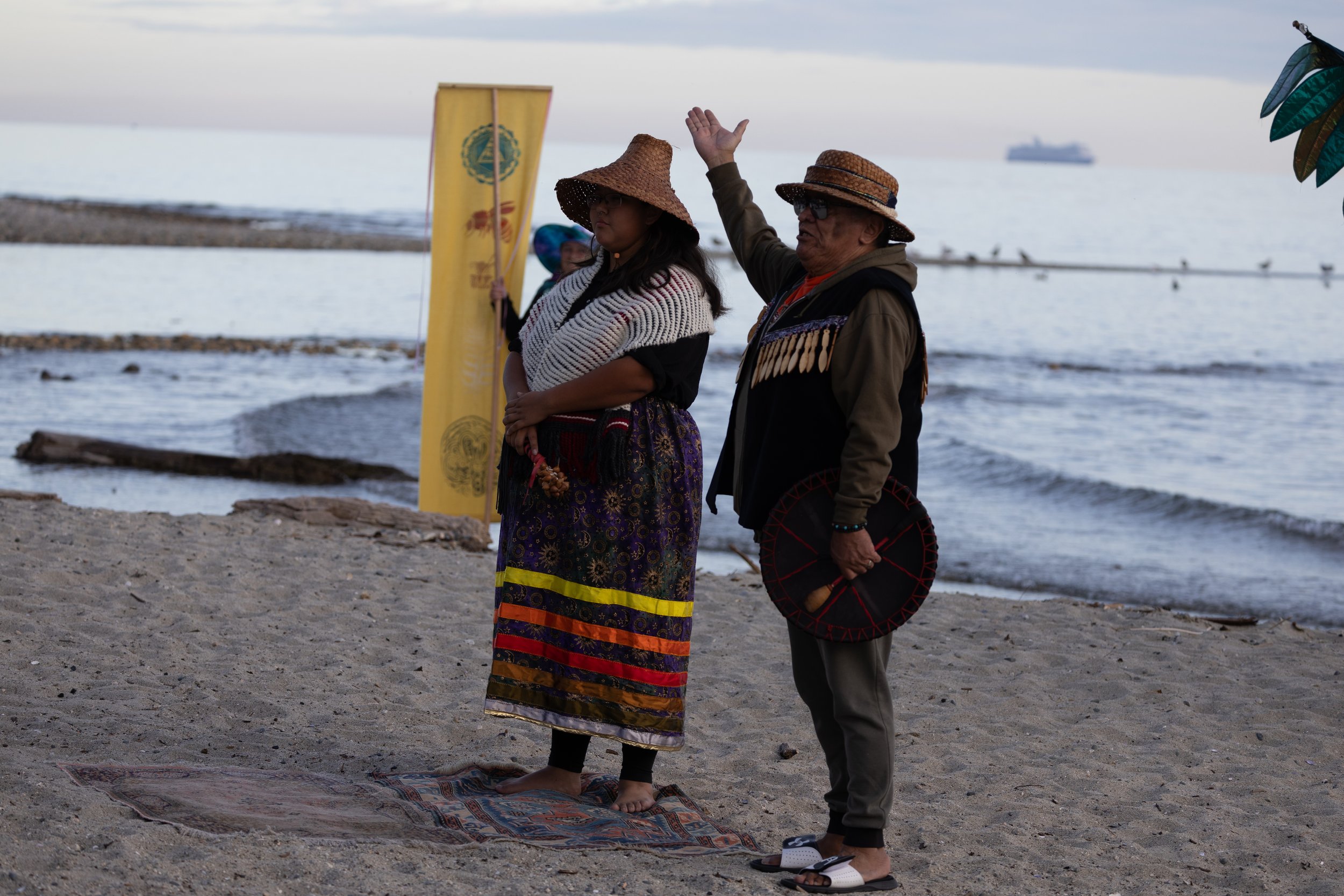
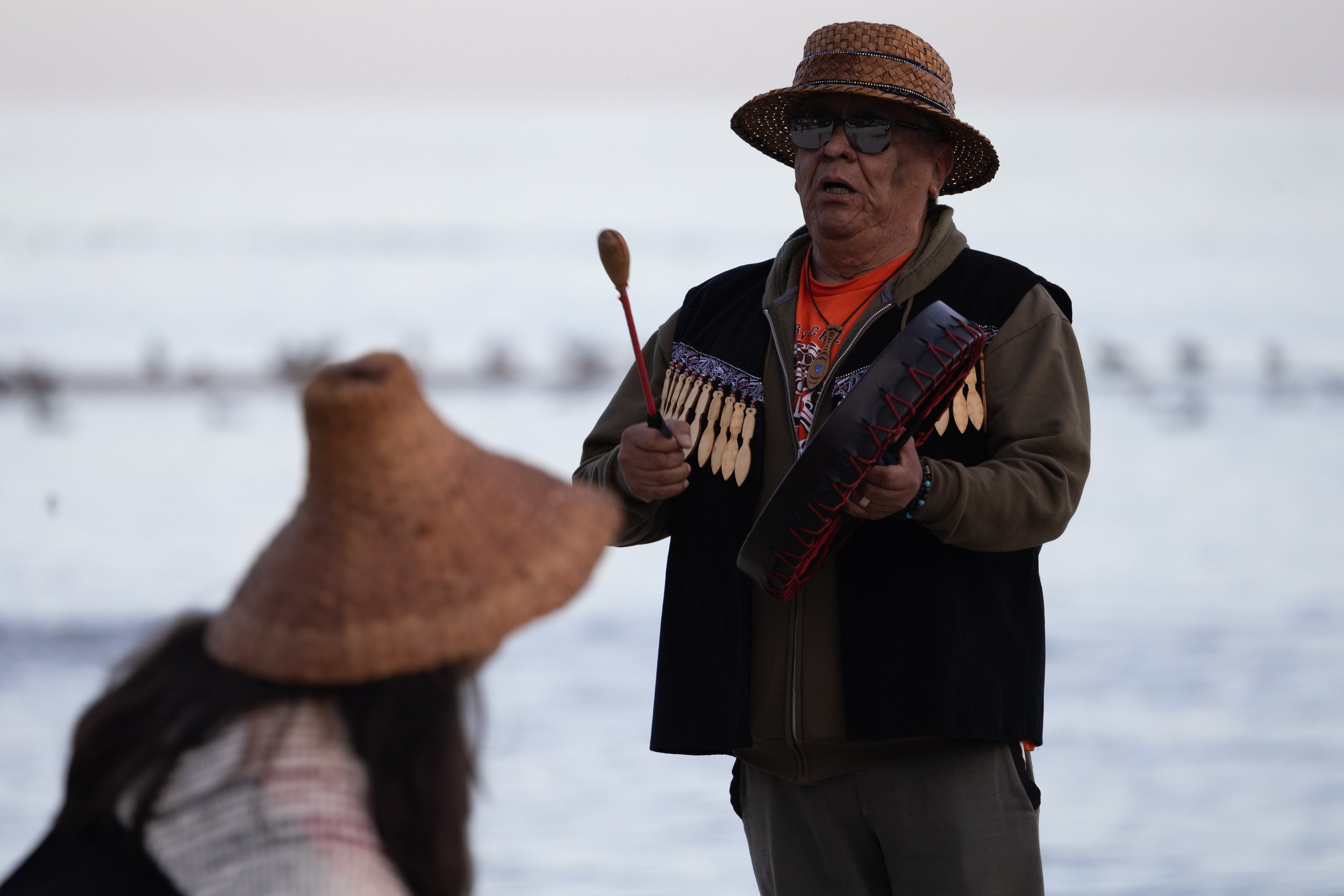
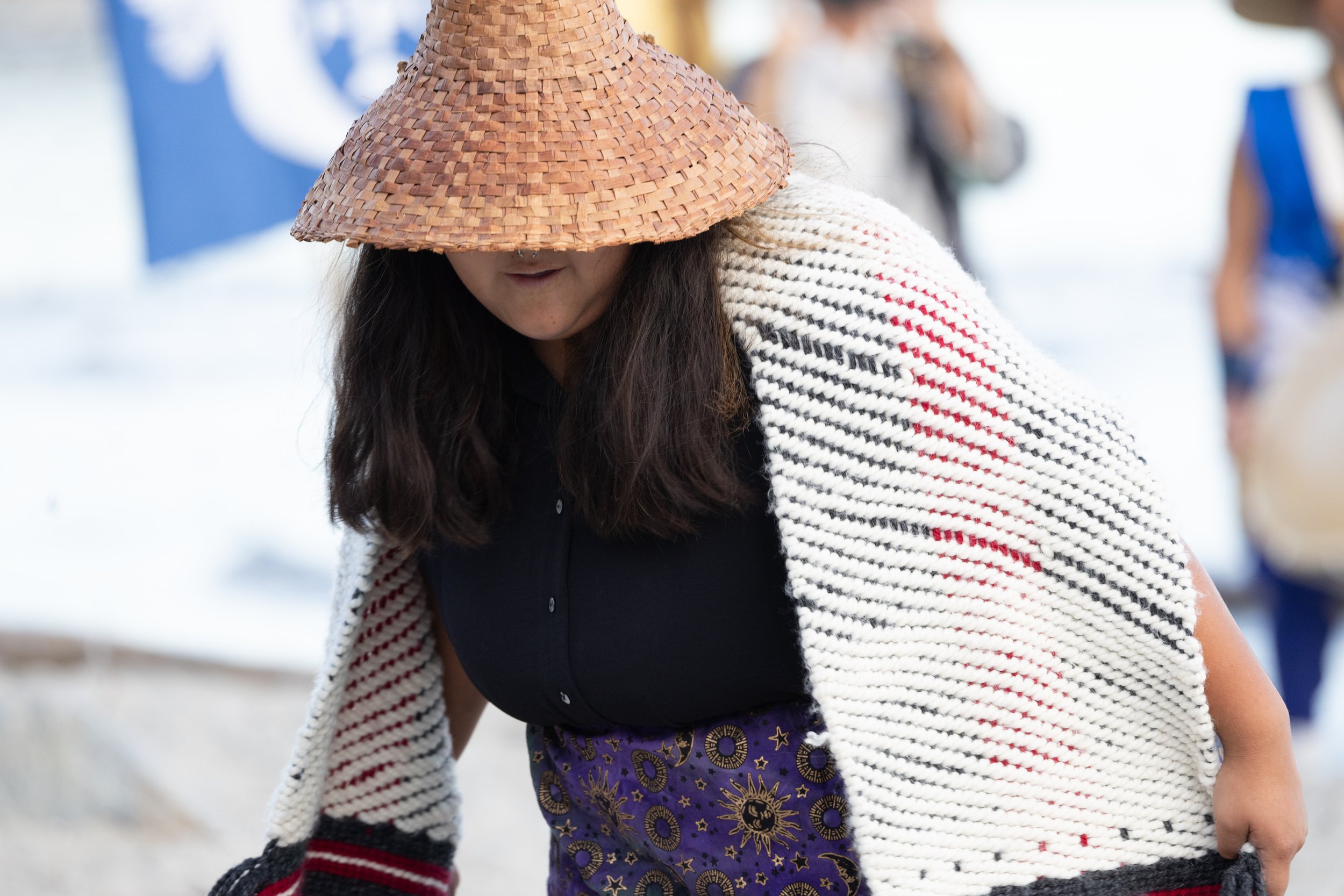
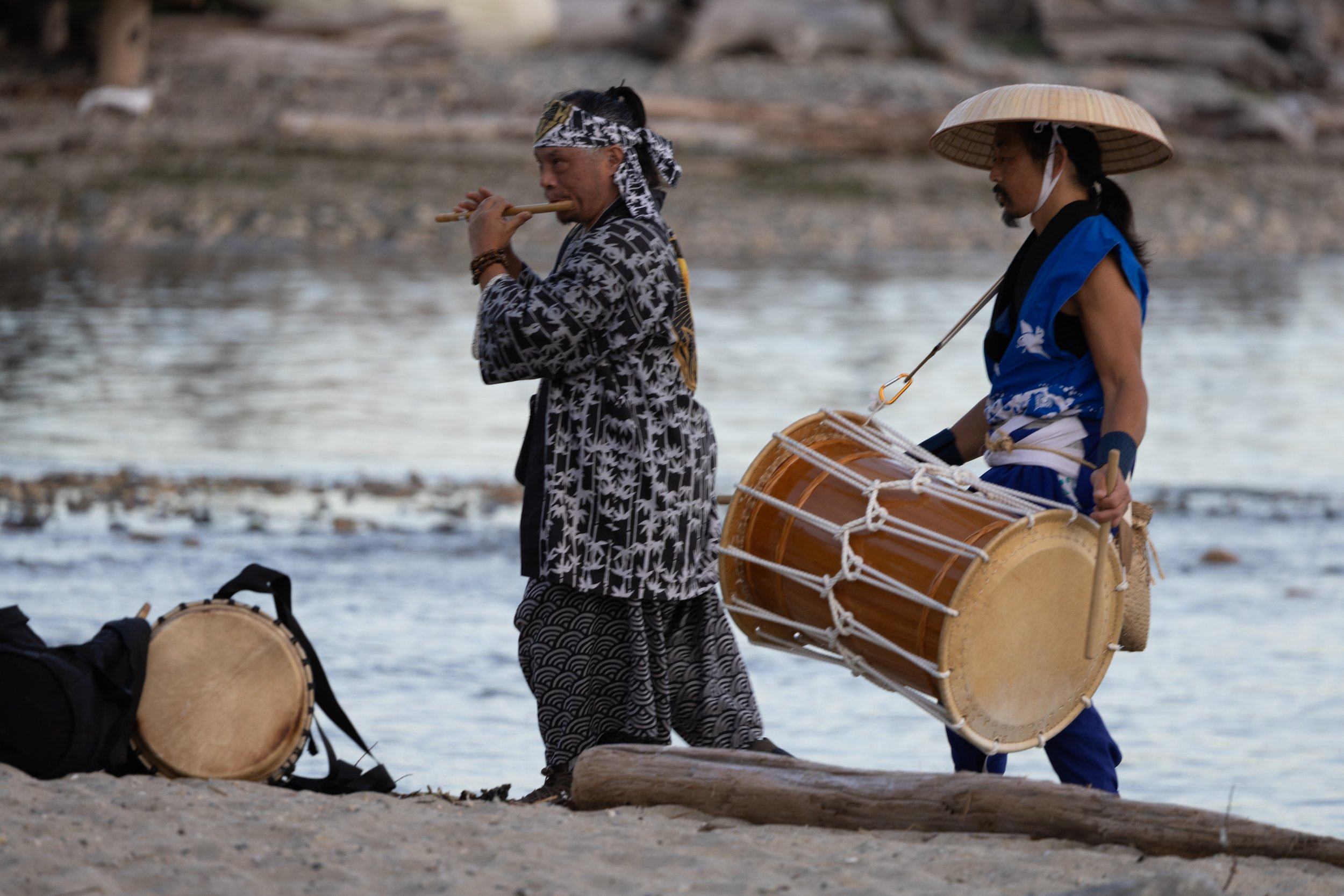
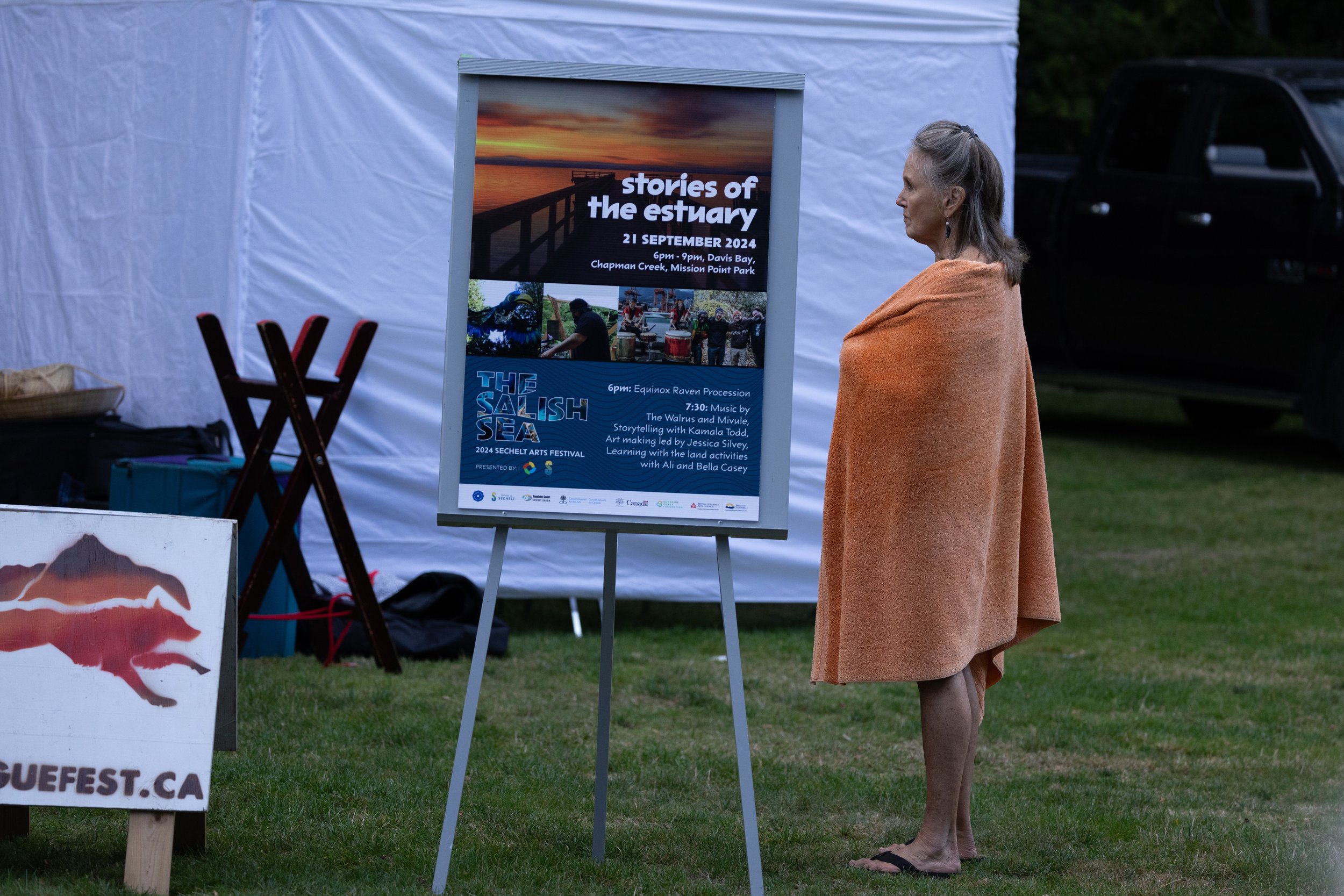
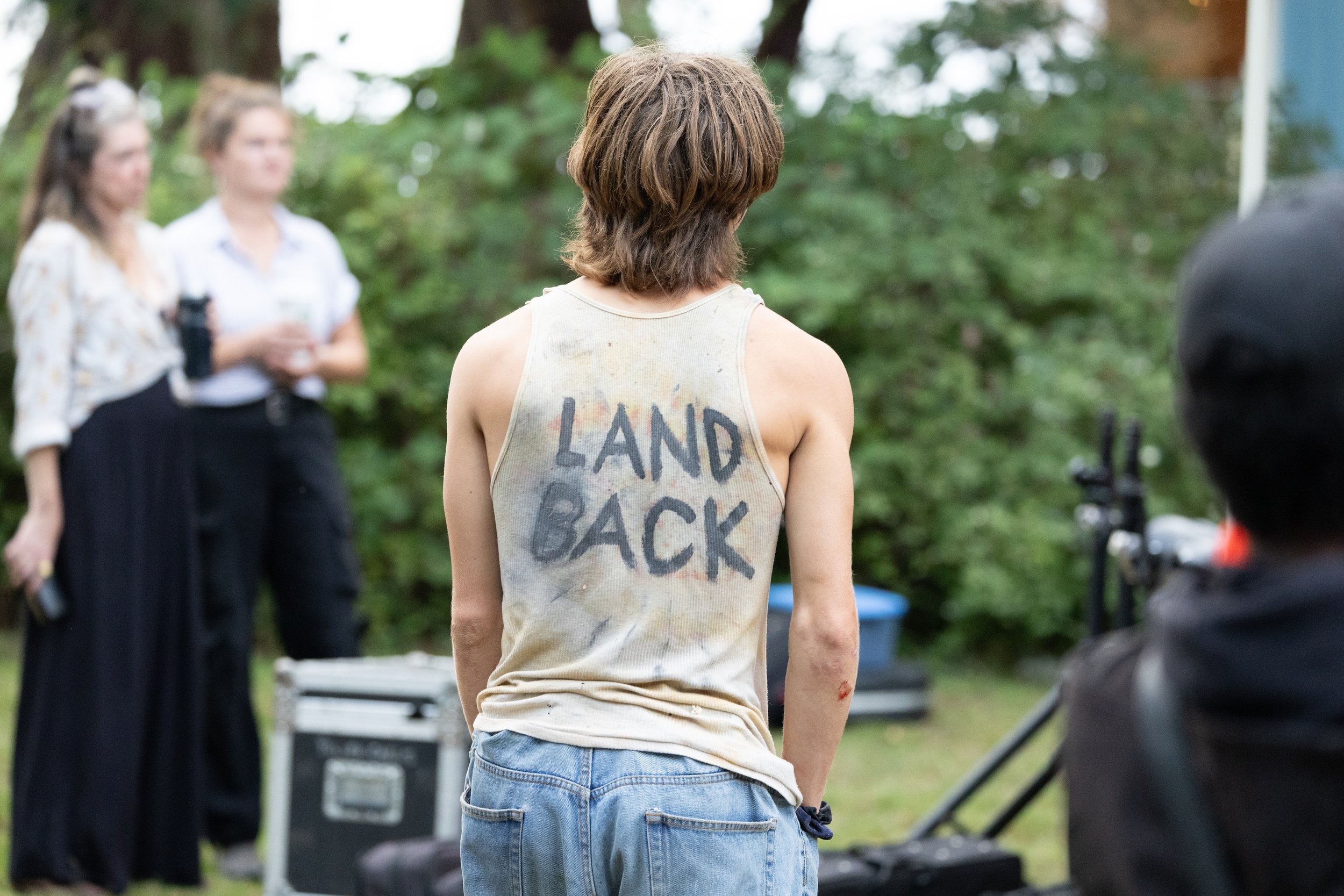
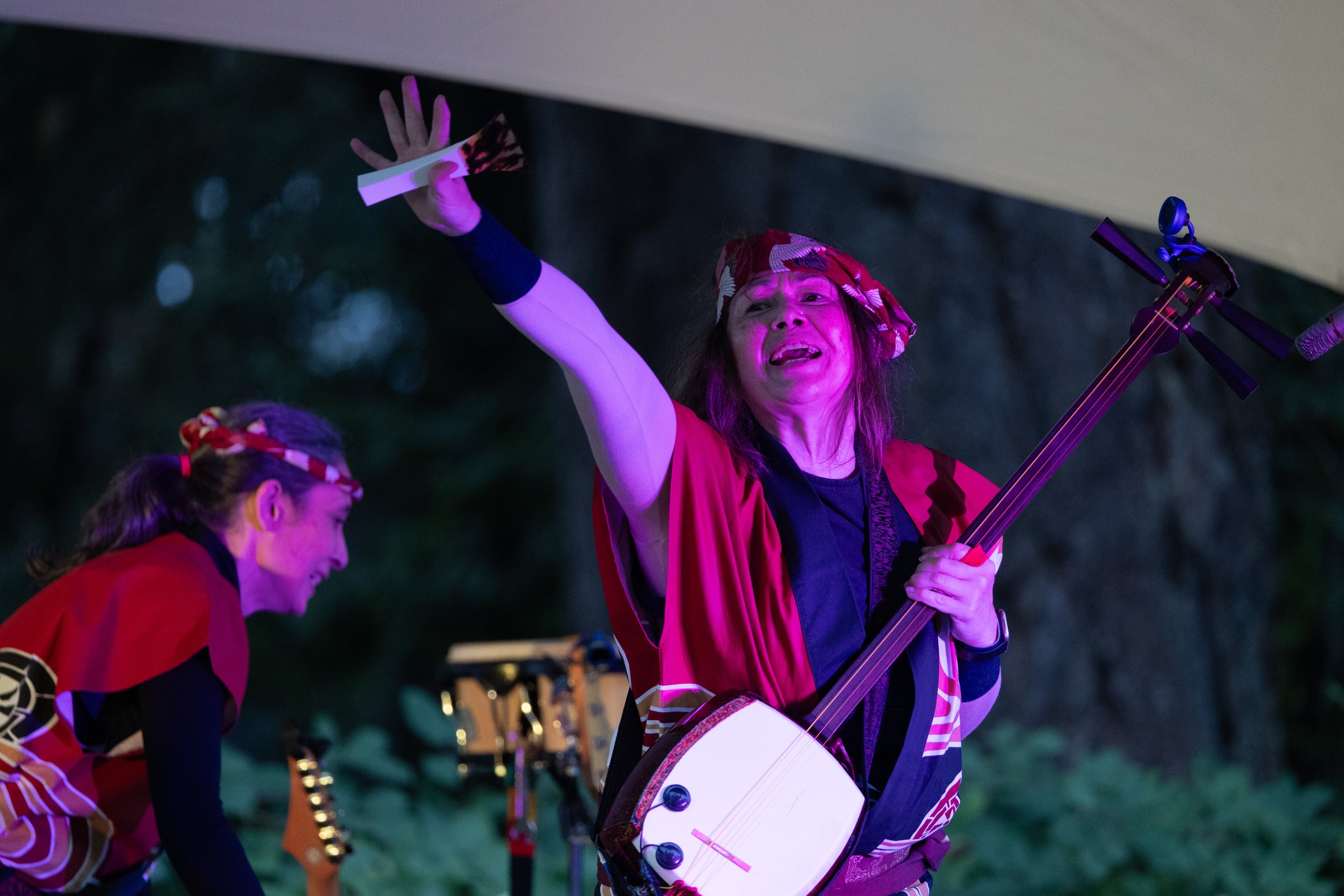
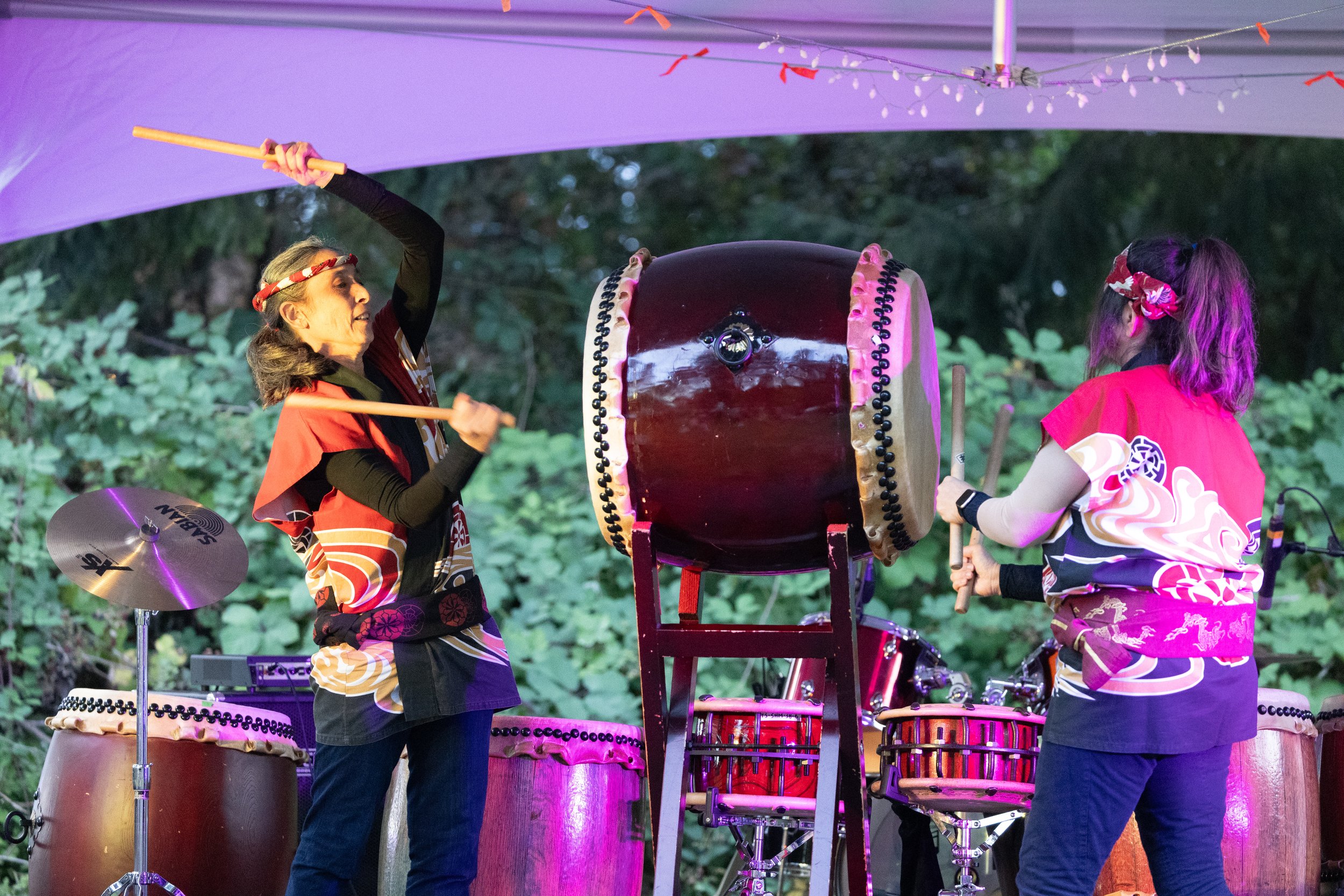
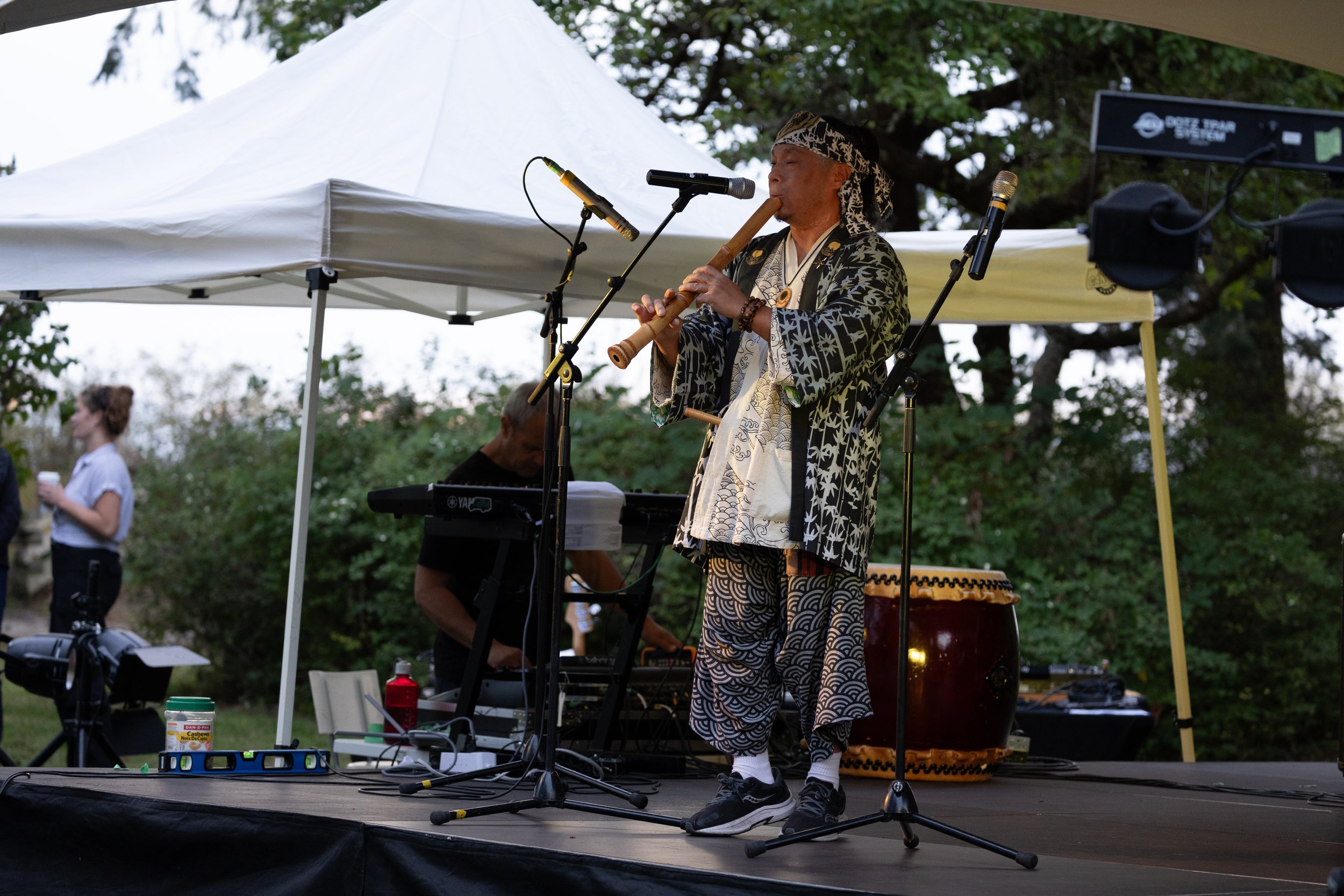
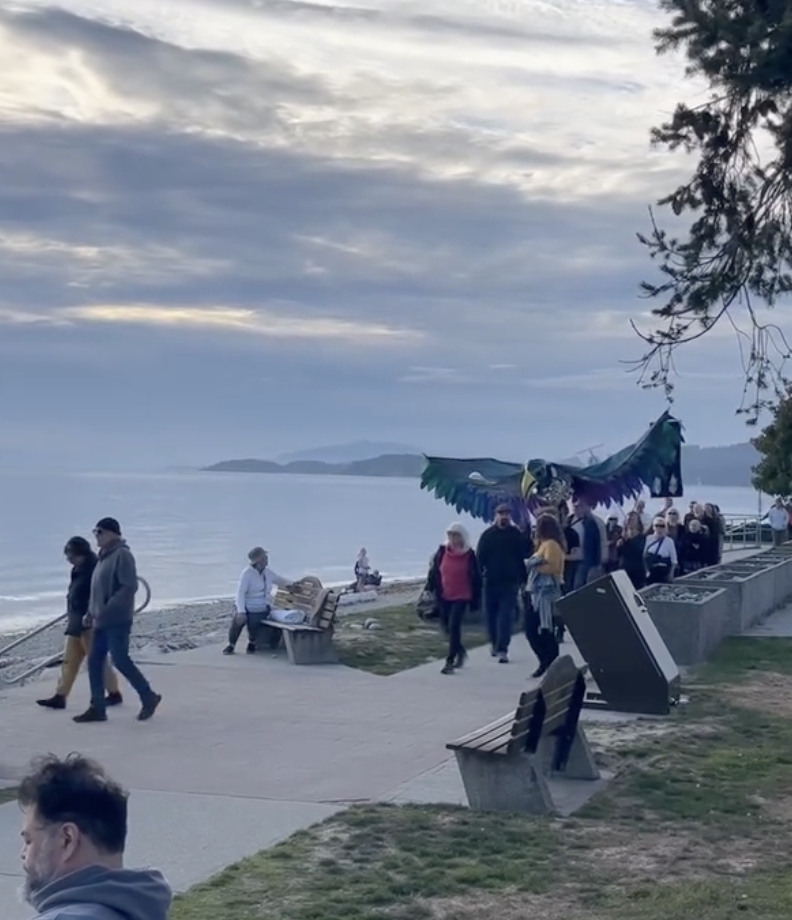

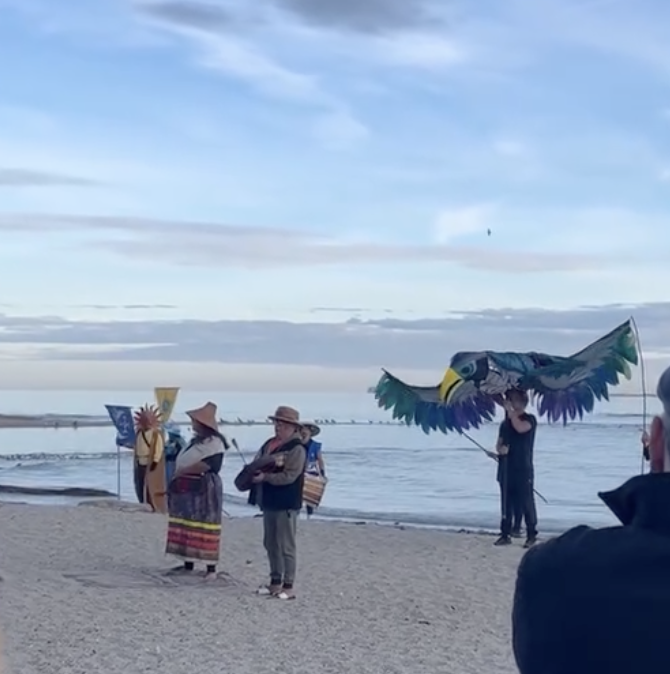
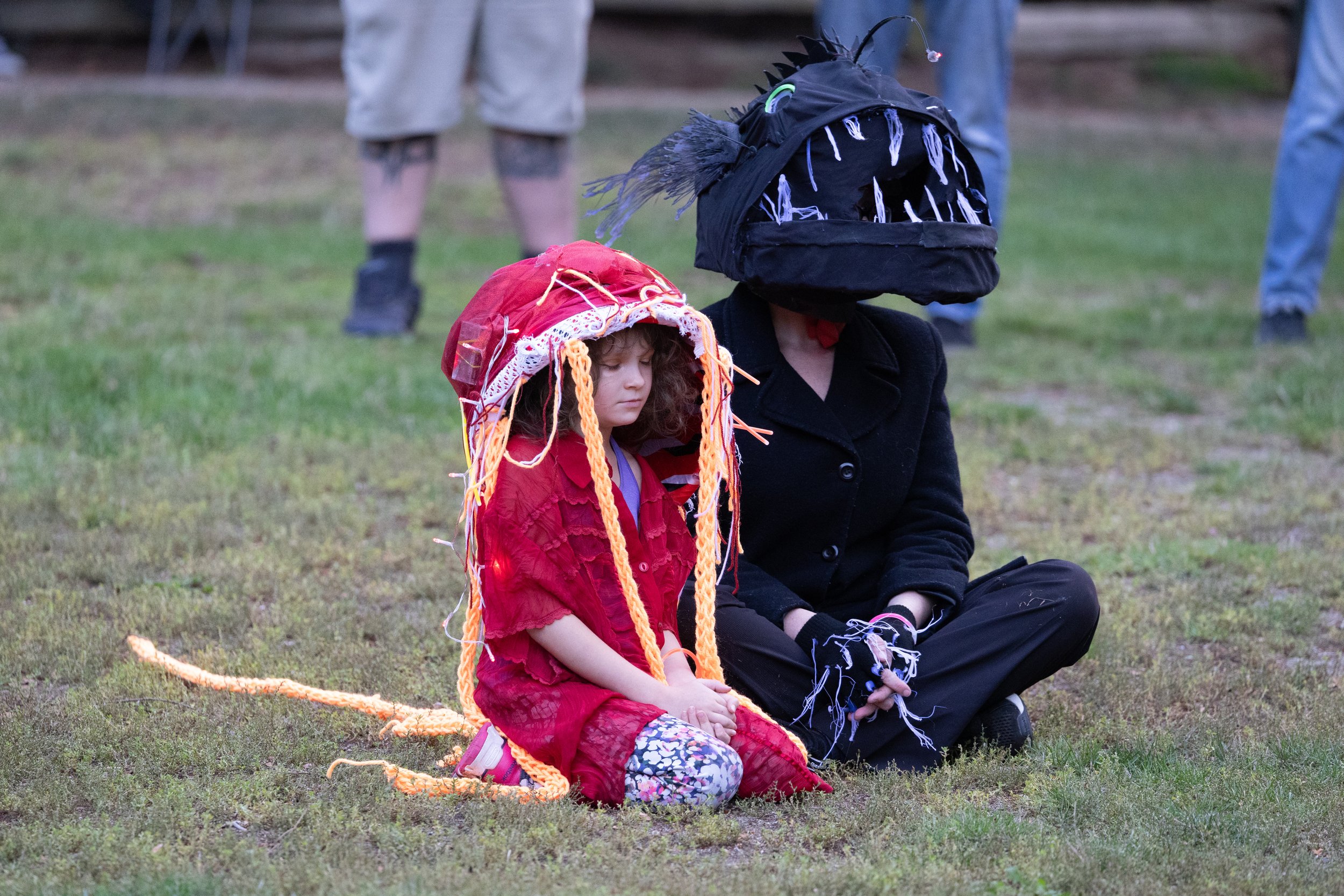
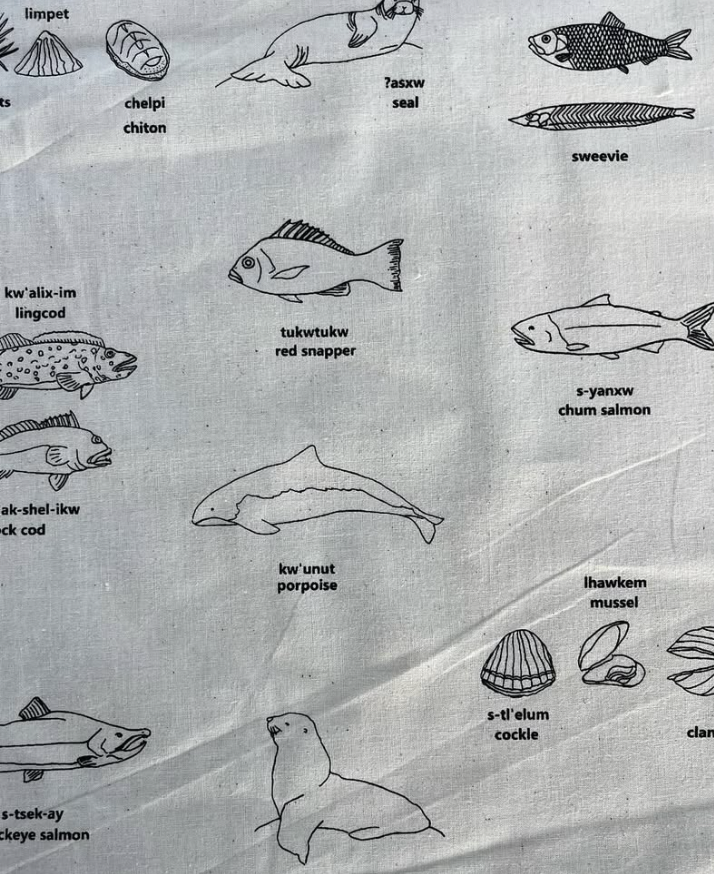
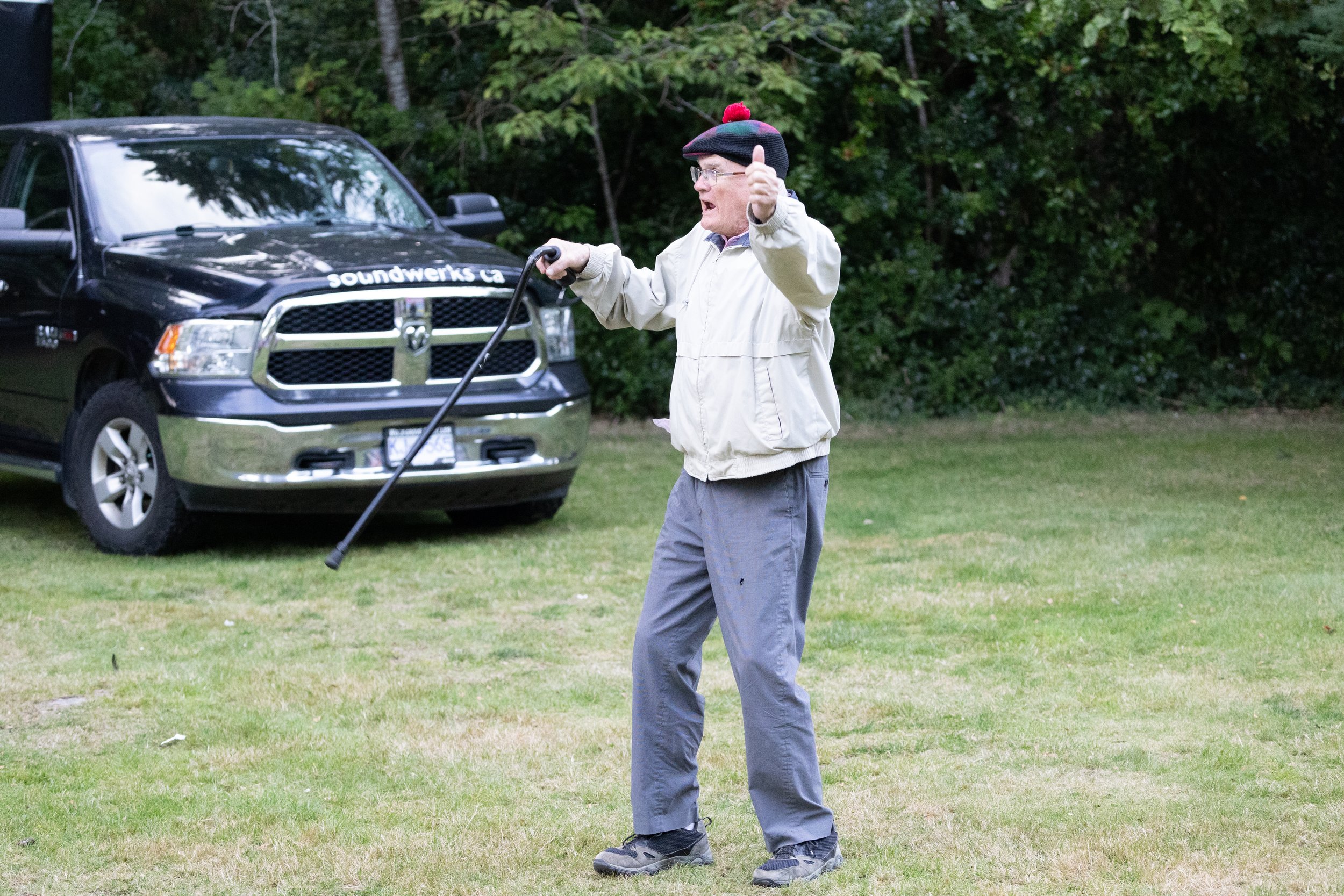
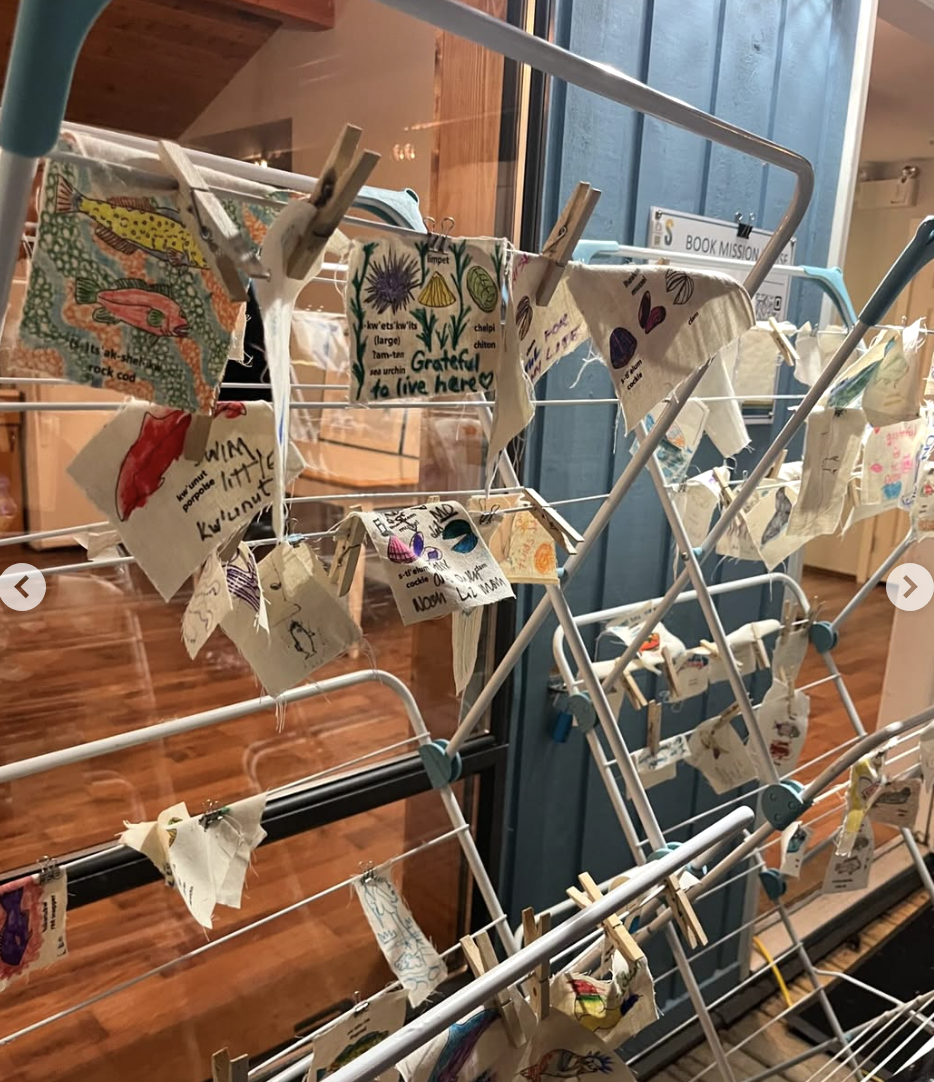
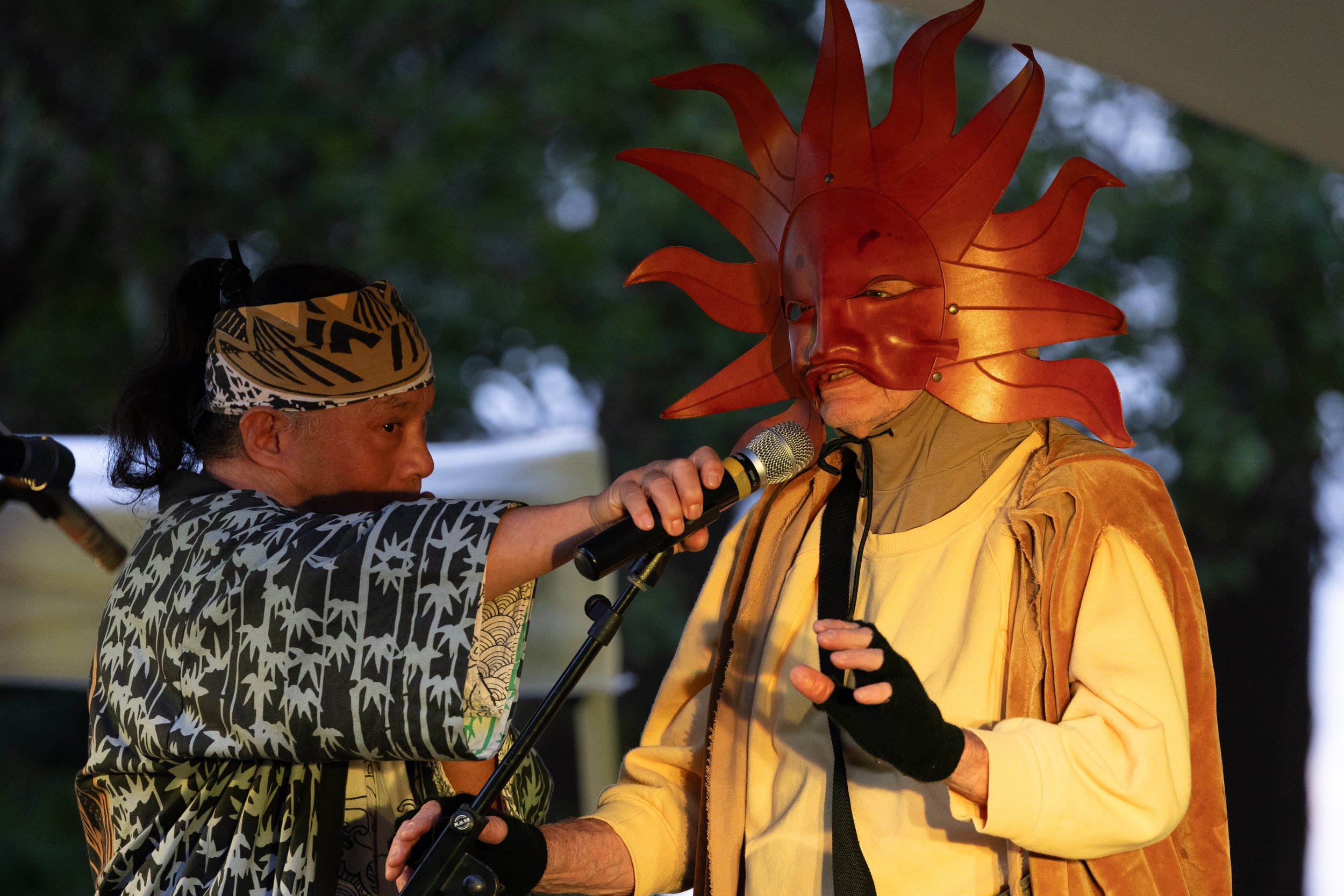
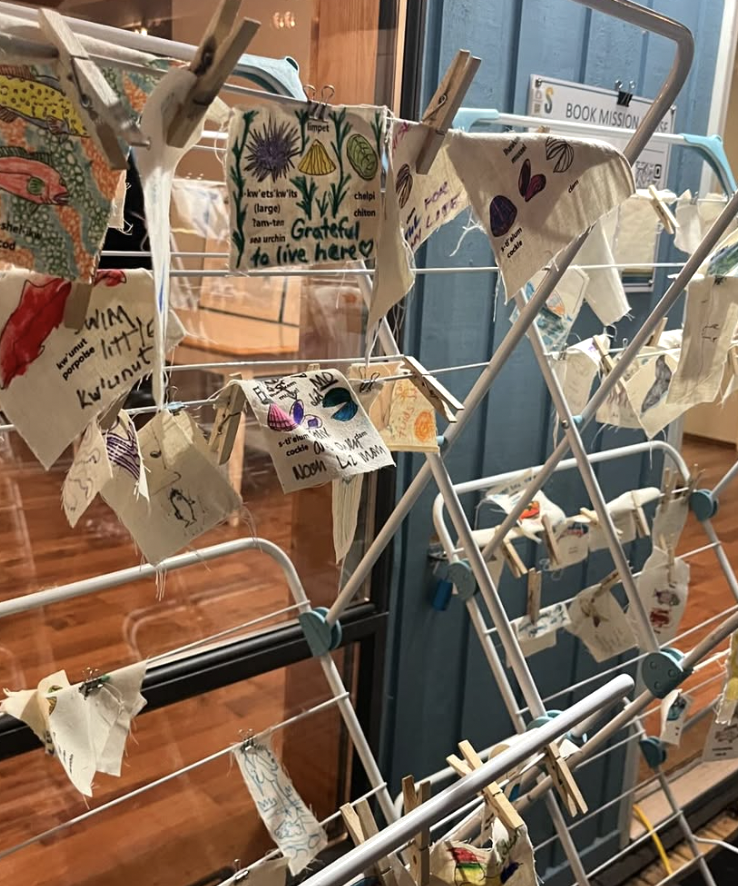
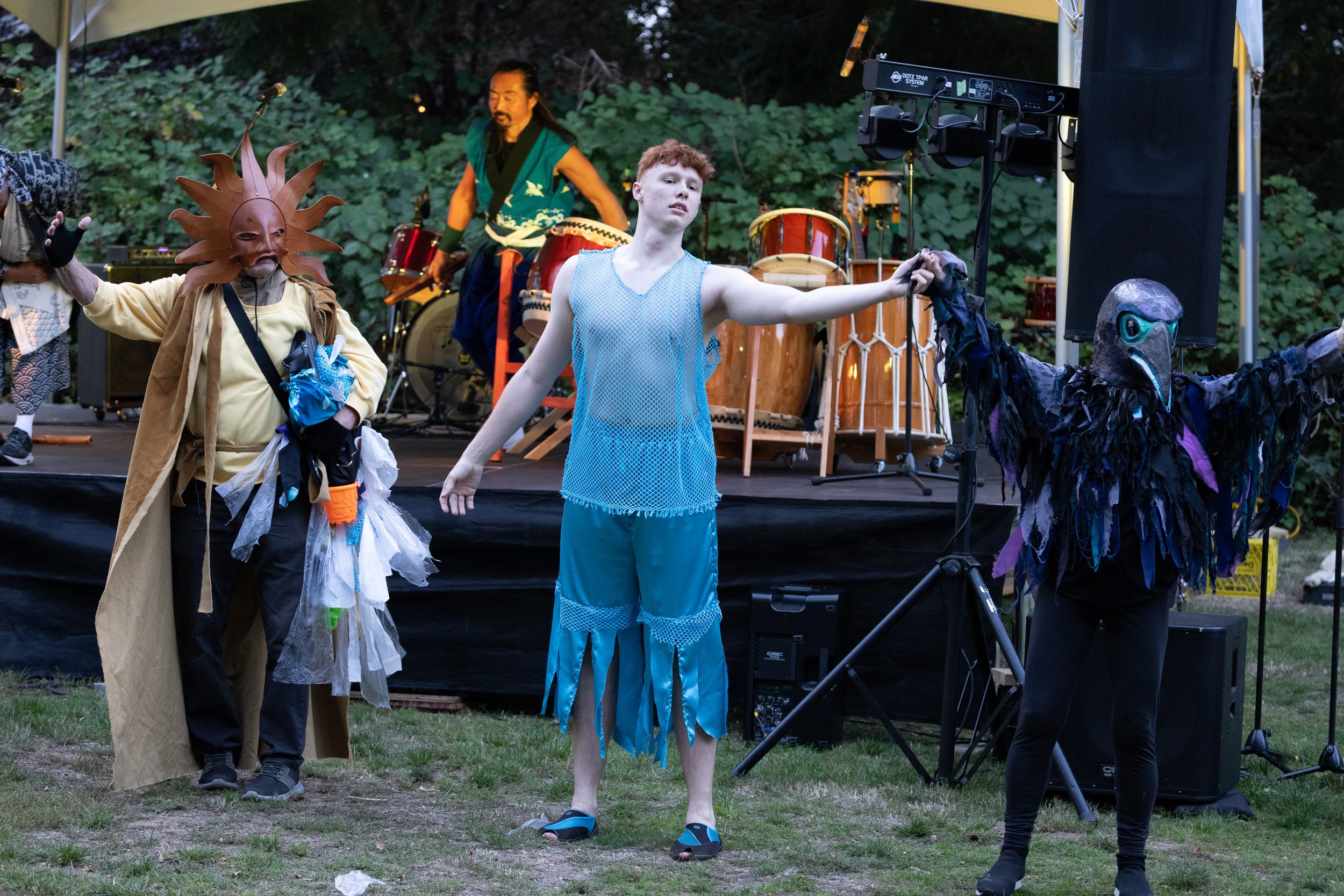
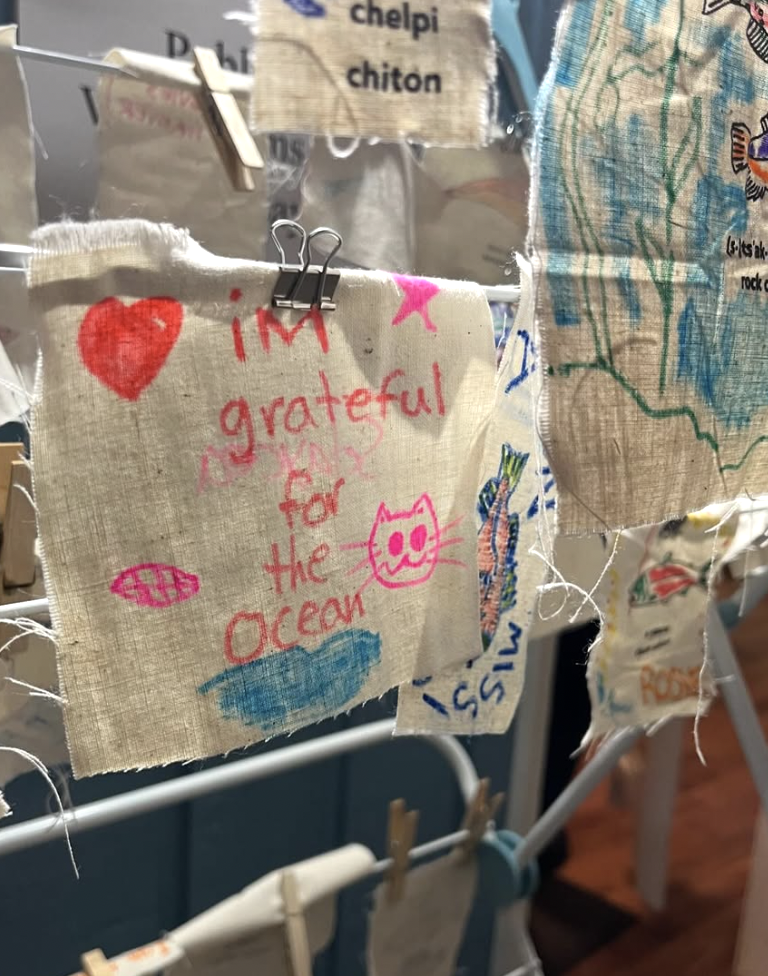
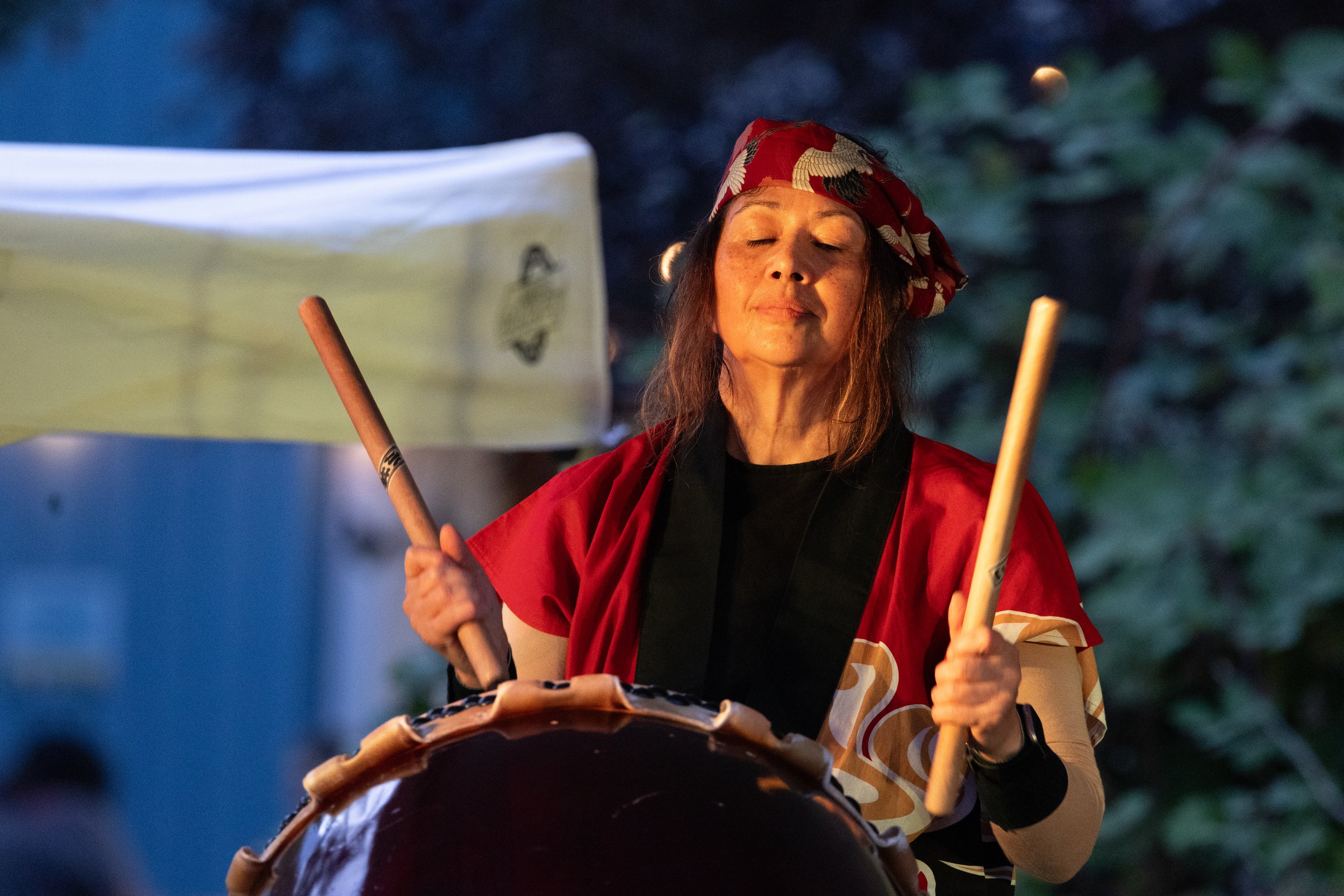
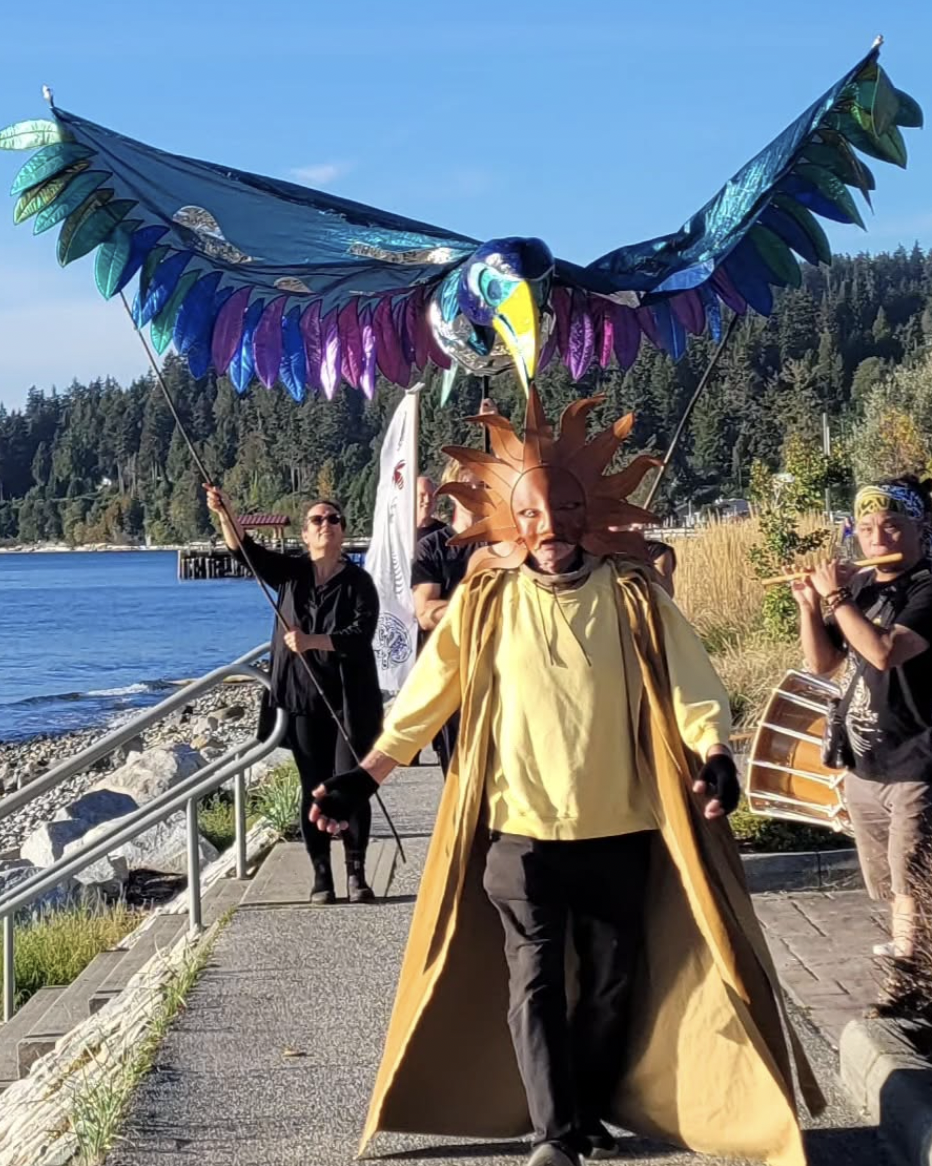
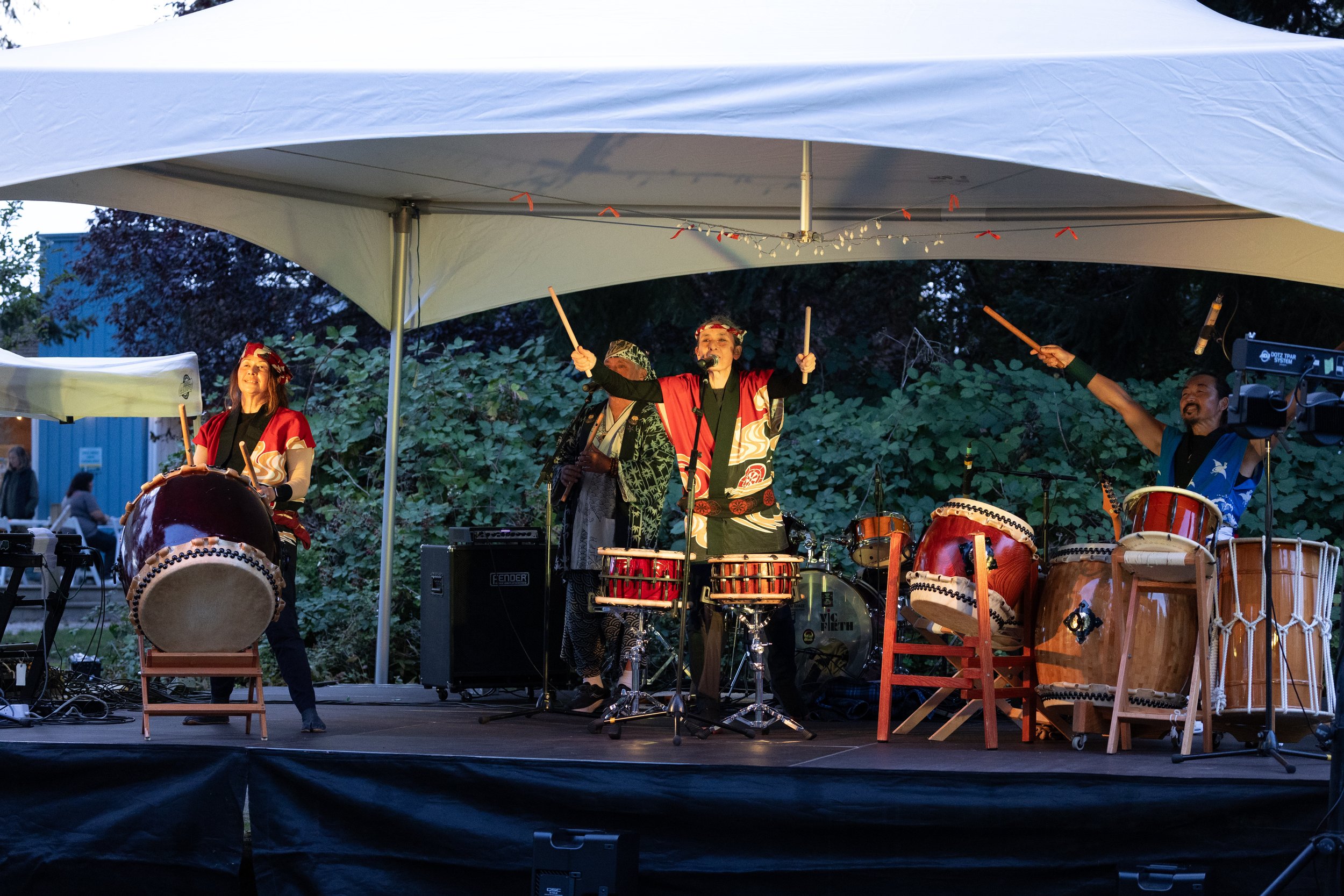

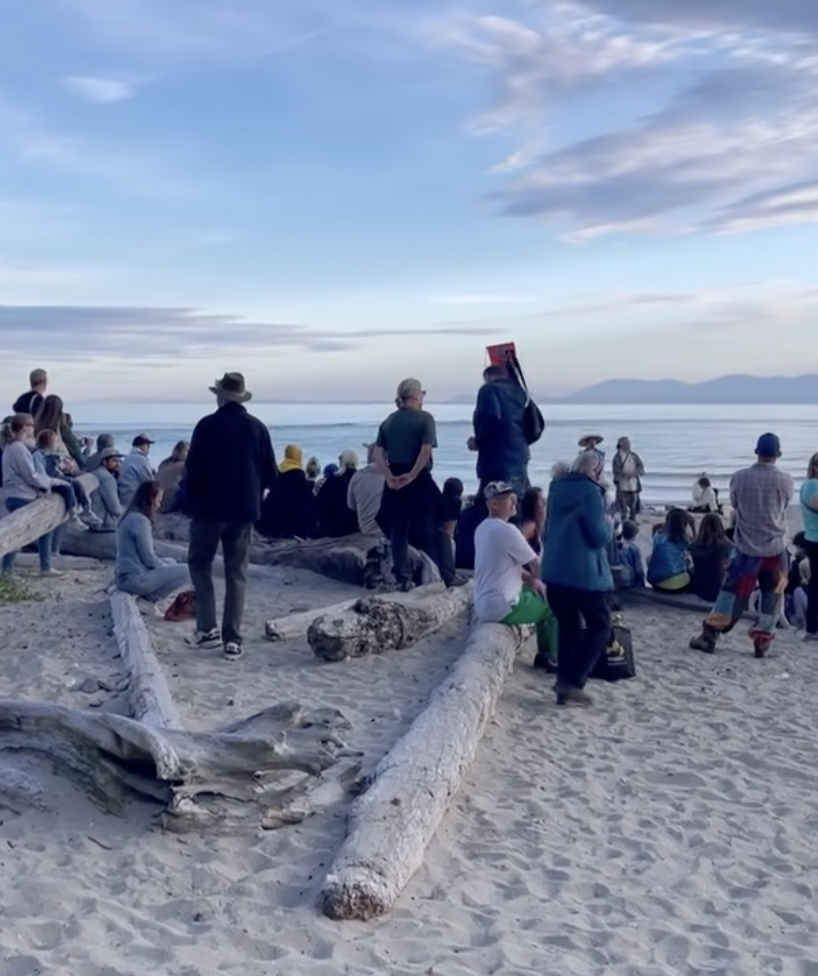
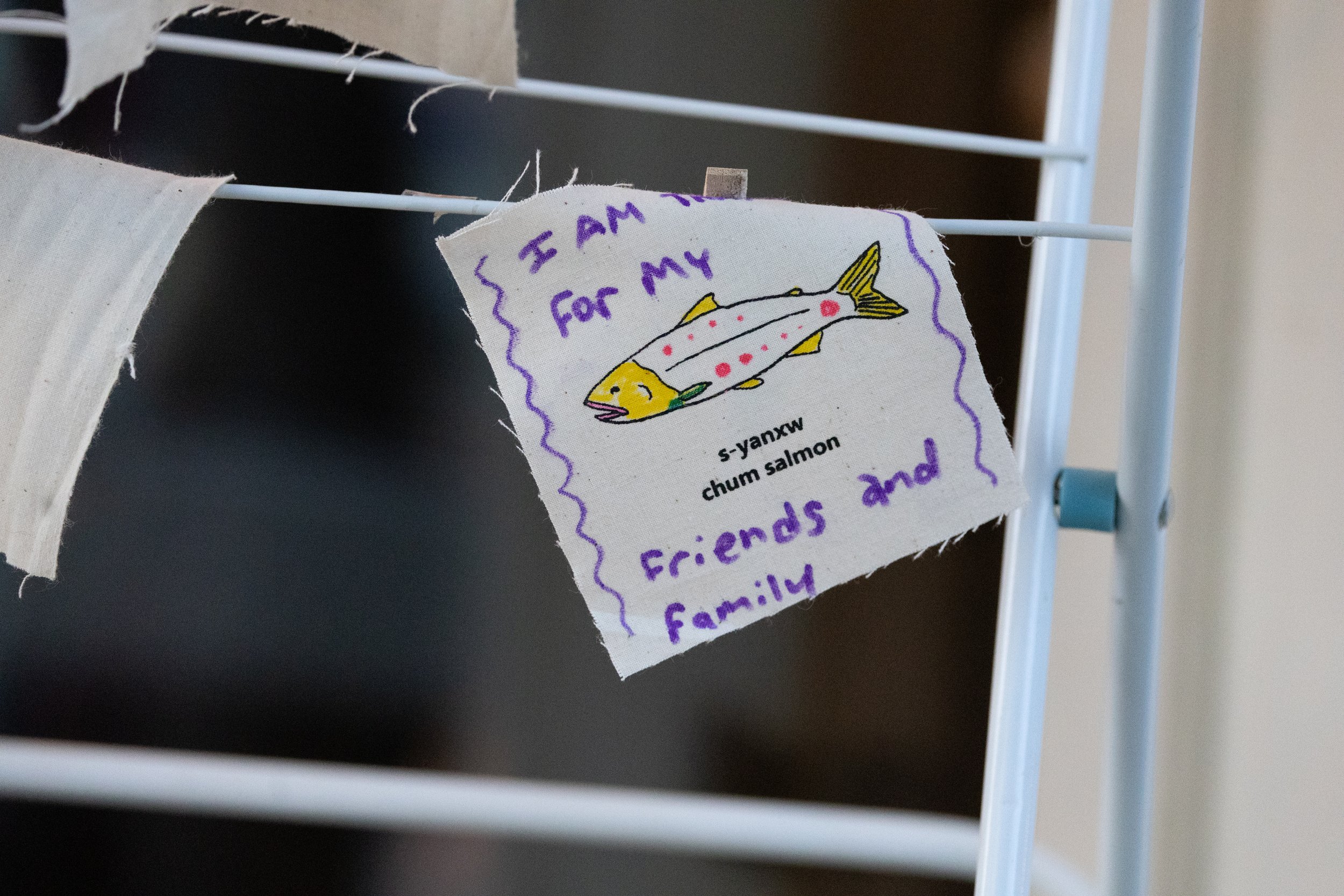
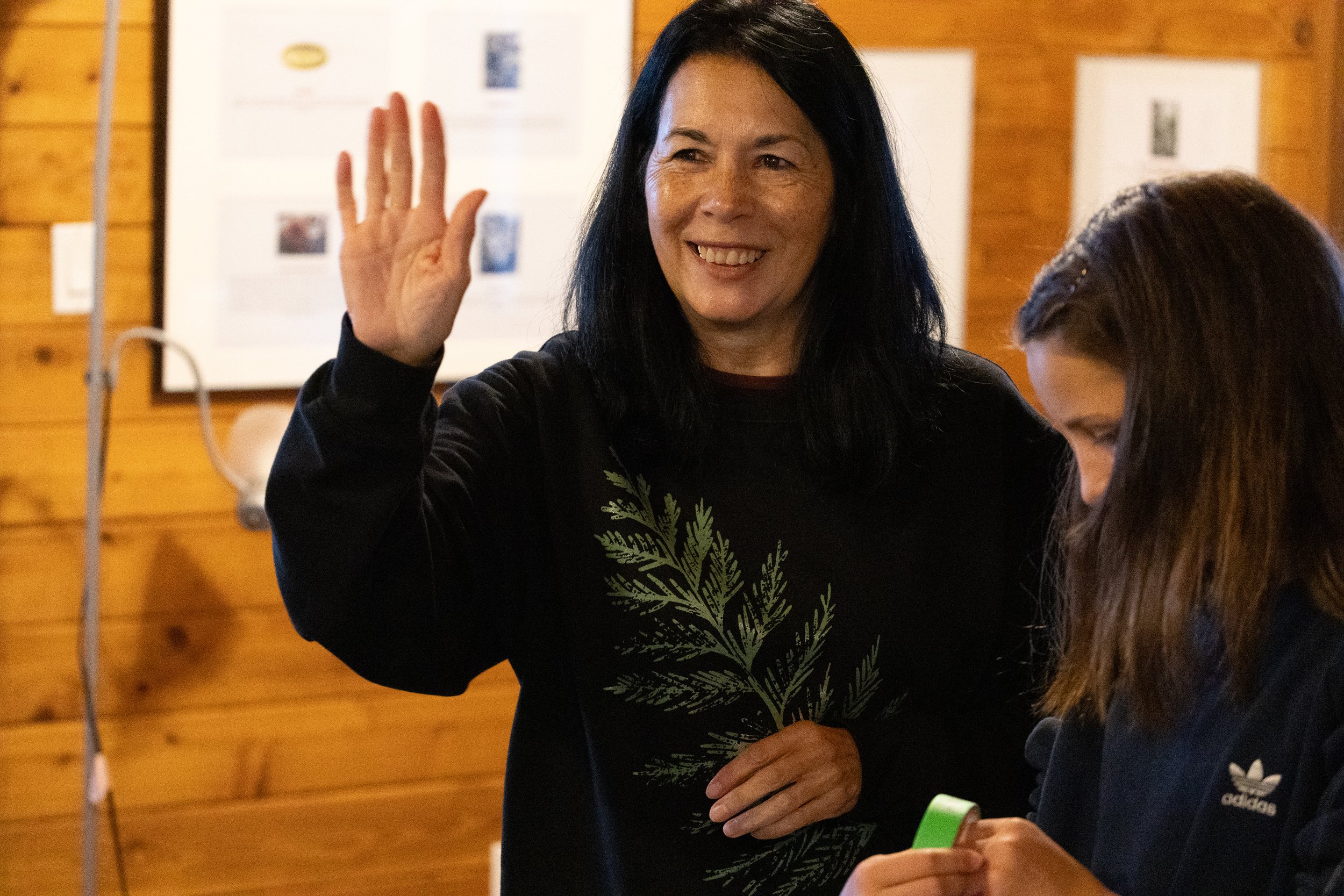
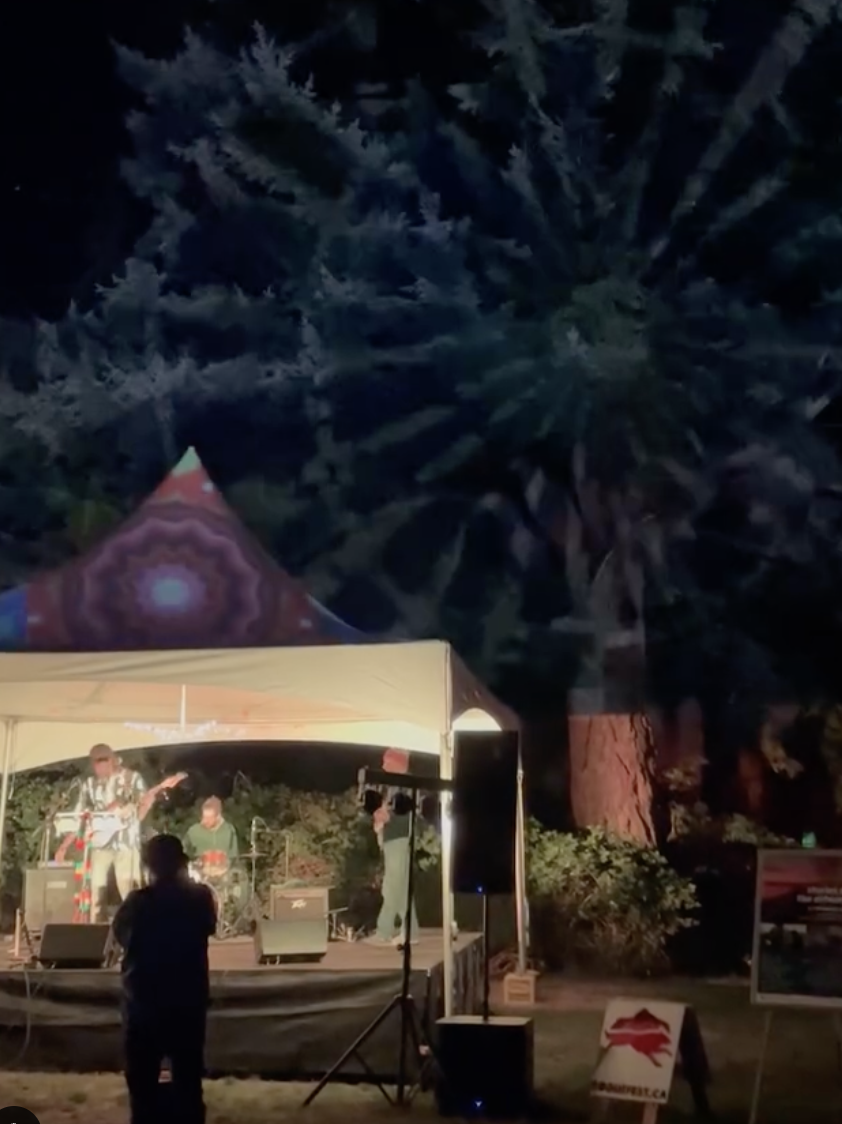
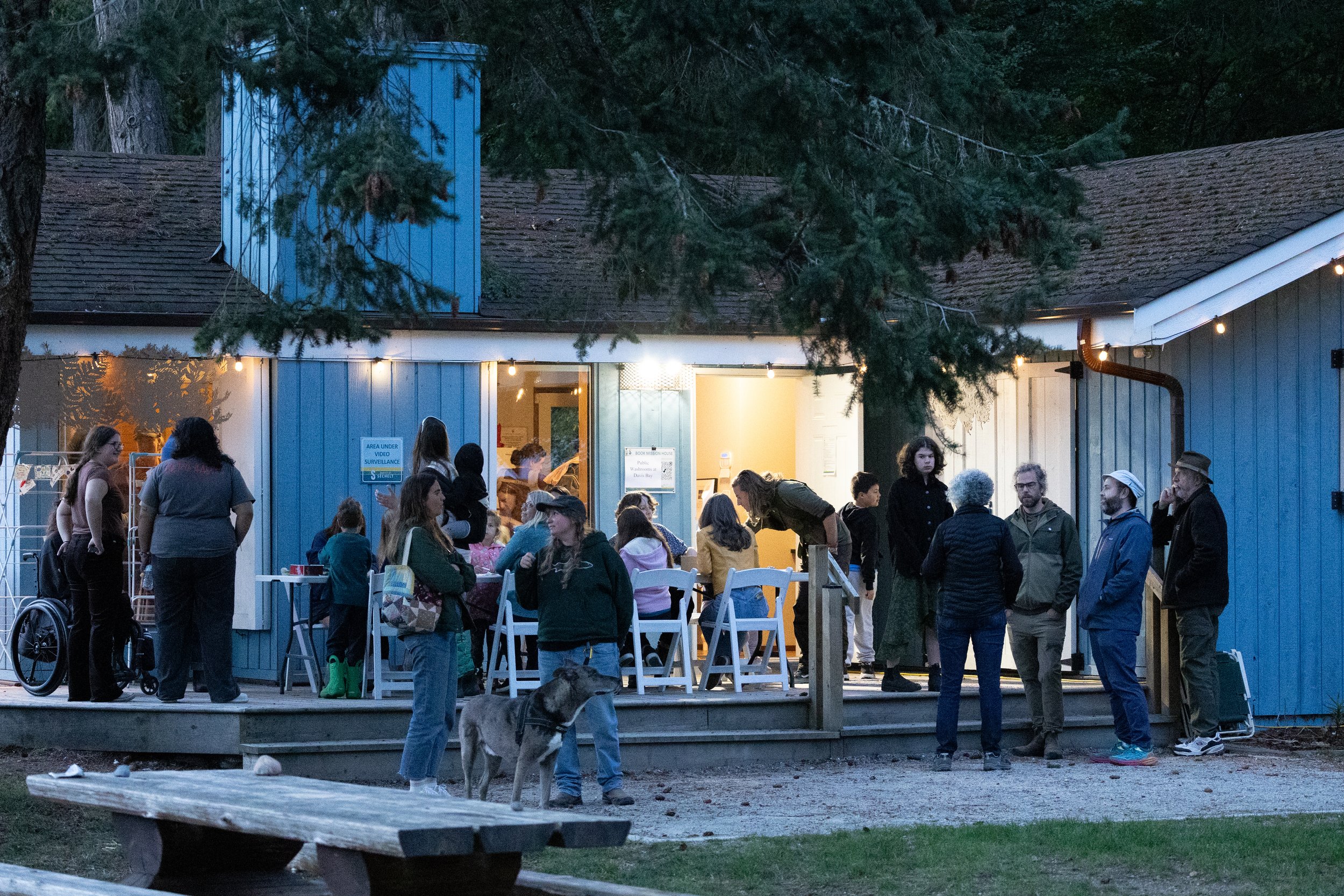
To announce the new Sechelt Arts Festival, we hosted two exhibitions that spoke to the theme of the festival, and its focus on art, ecology and climate change. This allowed us to bring more than 1,100 to the Arts Center to experience GO FISH, an immersive installation by Nettie Wild + Scott Smith. We announced the format of the new SAF, and its celebration of the autumnal equinox on September 21, 2024 at Chapman Creek/Mission Point.
Stories of the Estuary
September 21, 2024 | Festival Celebration, 6pm – 9pm | Free, Open to All
The Sechelt Arts Festival invites you to a celebration of the Salish Sea - its other-than-human inhabitants, its waterways and estuaries, its stories of travel and exchange, and its vitalness to Sechelt and its communities. Sechelt, as the land between two waters, has been shaped by the Salish Sea
We will gather at 6pm on the Davis Bay pier for a procession guided by musicians, drummers, dancers and puppets – all celebrating the creatures of the sea. Weaving shíshálh drumming, song and storytelling, with the power of taiko and the beauty of the shakuhachi flute, the procession unfolds a story of the raven, the estuary, and the equinox.
Cast for Equinox Raven include: Andy Johnson, cultural ambassador shishalh nation; Cora Lee Joe-Louise, dancer; Maggie Guzzi, raven; Connor Dixon, dancer; Gerardo Avila, equinox character mask; Noriko Kobayashi, taiko and shamisen (Japanese banjo); Kage, taiko; Bushido: Alcvin Ryūzen Ramos, shakuhachi, shinobue player, and Nori Akagi, taiko; Flags: Hazel Bell-Koski
Following the procession, we will gather at Mission Point House for music, storytelling and hands on activities. We gather to celebrate the shifting cycles of light, the return of the salmon to Chapman Creek, and the rich connections that the Salish Sea has brought to our communities.
In collaboration with the Coast Rogue Arts Society, music includes The Walrus (Deano and Kachy – loop beats with live bass and singing) and Mivule (Reggae, Afrobeat and Dub performed in English as well as Luganda)
Digital Storytelling with Kamala Todd | Art making led by Jessica Silvey | Learning with the land activities with Ali and Bella Casey | And more…
This event is a glimpse into a larger festival planned for 2025. Beginning in 2024, under the guidance of the Sunshine Coast Arts Council, the Sechelt Arts Festival connects art, ecology and climate change. We envision art as a means of calling attention to relationships –to our local ecologies, to our companion communities, and to the land, air and waters that make this part of the world so remarkable and unique. Art has the ability to help us think through difficult ideas through play, joy, community and belonging.
Our Salish Sea: An Exhibition
Sosan Blaney + Claudia Medina, Mieke Bray, Derek Georgeson, M. Simon Levin, Nadina Tandy, Kamala Todd, Clare Wilkening
This exhibition brought together works by artists living on the Sunshine Coast, sharing their stories of (and with) the Salish Sea. The festival, through art, sought to weave together environmental, cultural and social ideas as a means of inspiring our communities.
Robin Wall Kimmerer’s writing on the “grammar of animacy” has shaped this exhibition. She asks us to think of ecologies and environments as “kin” and not “things”.
“A bay is a noun only if water is dead. When bay is a noun, it is defined by humans, trapped between its shores and contained by the word. But the verb wiikwegamaa—to be a bay—releases the water from bondage and lets it live. “To be a bay” holds the wonder that, for this moment, the living water has decided to shelter itself between these shores, conversing with cedar roots and a flock of baby mergansers. Because it could do otherwise—become a stream or an ocean or a waterfall, and there are verbs for that, too. Water, land, and even a day, the language a mirror for seeing the animacy of the world, the life that pulses through all things, through pines and nuthatches and mushrooms. This is the grammar of animacy.”
Braiding Sweetgrass: Indigenous Wisdom, Scientific Knowledge and the Teachings of Plants
The works in the exhibition did not attempt to represent the Salish Sea, but reveal our relationships to this body of water that profoundly defines the place that we live in. The works in this exhibition asked you to be in relation – to the creatures that inhabit her, to the connections between the mountaintops and the estuaries, and to the legacies of colonial thinking that have turned her into a resource.
FIELD SCHOOL: THE CHAPMAN CREEK ESTUARY| SEPT 20-22, 2024
Participants: Laura Kozak (Lead), Sierra Rempel, Laura Piersol, Lindsay Cole, Clare Wilkening, M. Simon Levin, Suzanne Senger, Trent Maynard, Kamala Todd
Estuary Field School was a multi-part gathering guided by shared questions of our ecological, infrastructural and cultural entanglements with water. Learning from the mixing of ts'ukwum (fresh water) and kw’útl’-kwu (salt water) in the estuary where Chapman Creek meets the Salish Sea, the field school brought together artists, ecologists, civil servants and community practitioners. Two days of interdisciplinary dialogue, cultural experiences, walks and gatherings deepened our relationships within this watershed and provide the context for the making of cultural reflections.
Many of the participants in Field School made work to be shared with our community, and in particular, youth. The work made was included in an exhibition at the Arts Center.
SOME IMPORTANT RESOURCES THAT WE CONSIDERED:
Respecting and Taking Care of our Ocean Relatives: The Creation of the Haíɫzaqv Nation Oceans Act (5 min)
This Living Salish Sea (87 min)
Our Great Blue World (Coyote Science, accessible via APTN)
she shashishalhem language resource (First Voices)
Tina?7 Cht Ti Temíxw: We Come From This Land Squamish Nation
Goodbye Snauq: How We Work With Story (Lee Maracle)
We are the Inlet
Restoring a Healthy Inlet (Tsleil-Waututh Nation)
